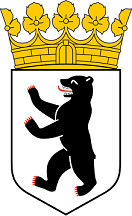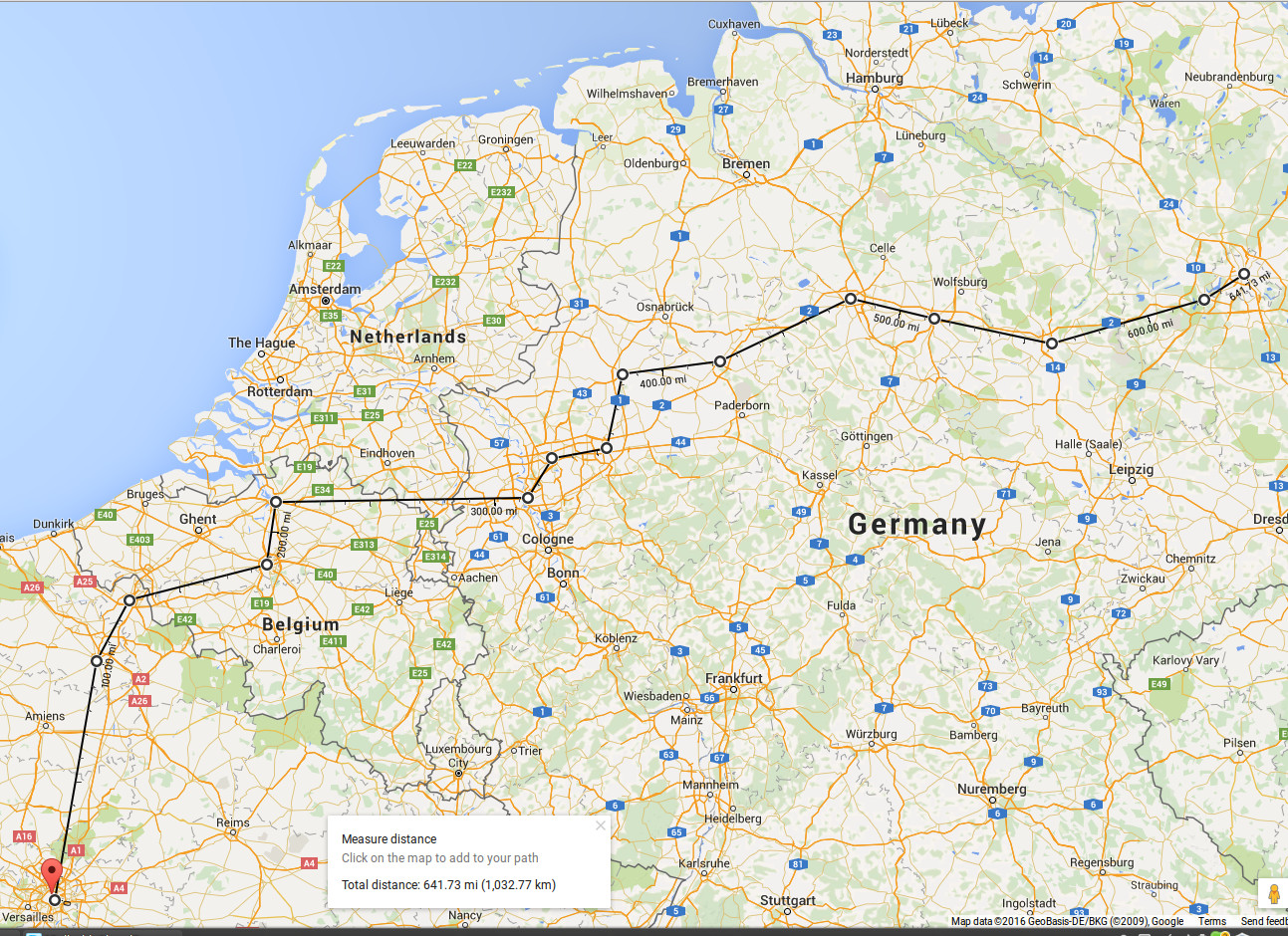Berlin
- Germany ~&~ Alternative Berlin ~&~ Berlin 1933
The decision has to be made. You cannot long roam the streets without choosing sides, but the choices are not as simple as they should be; to the east is certain security with the only cost being your freedom. To the west there is so much more you can do, and so many more dangers as well.
One city with two princes, and both demanding fealty, both promising protection from the anarchs and each other. Both watching over your every move. To the east is silence; to the west, the noises of drunken revelry. From both directions you can feel the eyes watching as, behind you, screams of pain echo through the night.
Eine Einführung: An Introduction
Berlin prospered for centuries under the rule of Gustav, a harsh and strict prince who tolerated no disobedience. For centuries the city had a small but powerful Kindred population which ruled over all mortal matters of importance without fear of retribution; Gustav upheld the Masquerade and none dare defy him.
Then came the end of the Second World War. The vast majority of the city's Kindred met Final Death during the bombings, destroyed by the savage explosions that rocked the entire city to its foundations. The city of Berlin was divided by the humans of other countries and, for the first time in more than six-hundred years, Gustav lost the iron rule of his domain, forced by the Canaille to stay in the eastern part of his city.
Its builders did not designed the Berlin Wall to stop Kindred, but Wilhelm, usurper to Gustav's throne in the west, convinced the Tremere to create a mystical barrier strong enough to stop the passage of all but the most powerful or crafty Kindred. Now the Wall has come down; Brujah no longer rule over the Eastern Bloc of Europe and many of their elders have disappeared.
The magical barrier has been weakened as well, damaged as revelers dismantled the wall. Gustav is ready to take back what is rightfully his, using any means necessary. Wilhelm, once Gustav's trusted aide, now prince of the western half of the city, has other ideas. Wilhelm has changed the rules in Berlin, allowing the creation of progeny, unrestricted travel by Kindred from other domains, and the growth in both the numbers and power of the anarchs.
During Wilhelm's rule, West Berlin has become a metropolis and a thriving convention city, hosting well over one-thousand conventions annually. He has no intention of surrendering his domain to the prince of the East, for the city has prospered under his rule, both for the Kindred and the kine alike.
And so it is war. The East Berliners fight to regain what was once theirs and the West Berliners fight to keep the power that they have gained for themselves. Berlin continues to coexist by day, slowly adjusting to a situation much changed by the reunion of its divided halves. While the people of Berlin -- and all of Germany -- have greeted long lost relatives with open arms and begun forging a greater nation, the struggle is not over. Now that the first glow has faded, everyone must deal with two generations of different laws and lifestyles that have left an indelible mark on both halves.
By night, Berlin is a political hotbed of intrigue and violence. Kindred guard borders that no longer exist for humans; vampires fight amongst themselves, deciding where they will hunt, where they will sleep and which prince is the true leader of Berlin. So far the damage has been minor, but that is bound to change. Neither prince will yield in this bitter dispute and neither will surrender a meter of territory; both remain unsatisfied with only half a city.
New faces appear nightly. Anarchs run freely through the western part of town, giving grudging respect to Wilhelm's laws but threatening to bring the turbulent situation to the notice of the Camarilla. Choices must be made; a final decision of who will be prince is all that will keep the Camarilla and its Justicars from crushing this growing freedom. Who will you follow, who will you defy? How can you truly be certain which prince is the right one, when the loser will almost certainly forfeit his immortal unlife?
Now trapped in the East, Gustav ruled Berlin for six-hundred years. During his reign none dared break the laws. The Camarilla had no reason to examine Berlin.
In the West, Wilhelm is a kinder prince, but anarchs are showing what too much Kindred freedom can do. The Camarilla carefully watches for any signs of serious trouble.
Individual Kindred have already decided who they want to rule in Berlin, but they do not talk of these things. They simple wait for your decision to be made. Will they welcome your coterie or destroy you? There can be no election, but every Kindred's opinion matters for more important issues than just who will rule. Every Kindred's opinion could well determine who lives another night.
All of Berlin's Kindred will be watching your coterie and it's every move; all the Kindred await their decision. Which way will they turn? Who will be their prince...or will they even allow a prince to rule them?
Quote
"We like our Berlin immensely -- an ugly place it must be to anyone who comes to it hipped or solitary..." -- George Elliot
Appearance
City Device
Climate
Berlin has a Maritime temperate climate according to the Köppen climate classification system. There are significant influences of mild continental climate due to its inland position, with frosts being common in winter and there being larger temperature differences between seasons than typical for many oceanic climates. Summers are warm and sometimes humid with average high temperatures of 22–25 °C (72–77 °F) and lows of 12–14 °C (54–57 °F). Winters are cool with average high temperatures of 3 °C (37 °F) and lows of −2 to 0 °C (28 to 32 °F). Spring and autumn are generally chilly to mild. Berlin's built-up area creates a microclimate, with heat stored by the city's buildings and pavement. Temperatures can be 4 °C (7 °F) higher in the city than in the surrounding areas.
Annual precipitation is 570 millimeters (22 in) with moderate rainfall throughout the year. Snowfall mainly occurs from December through March.
Calendars
Districts
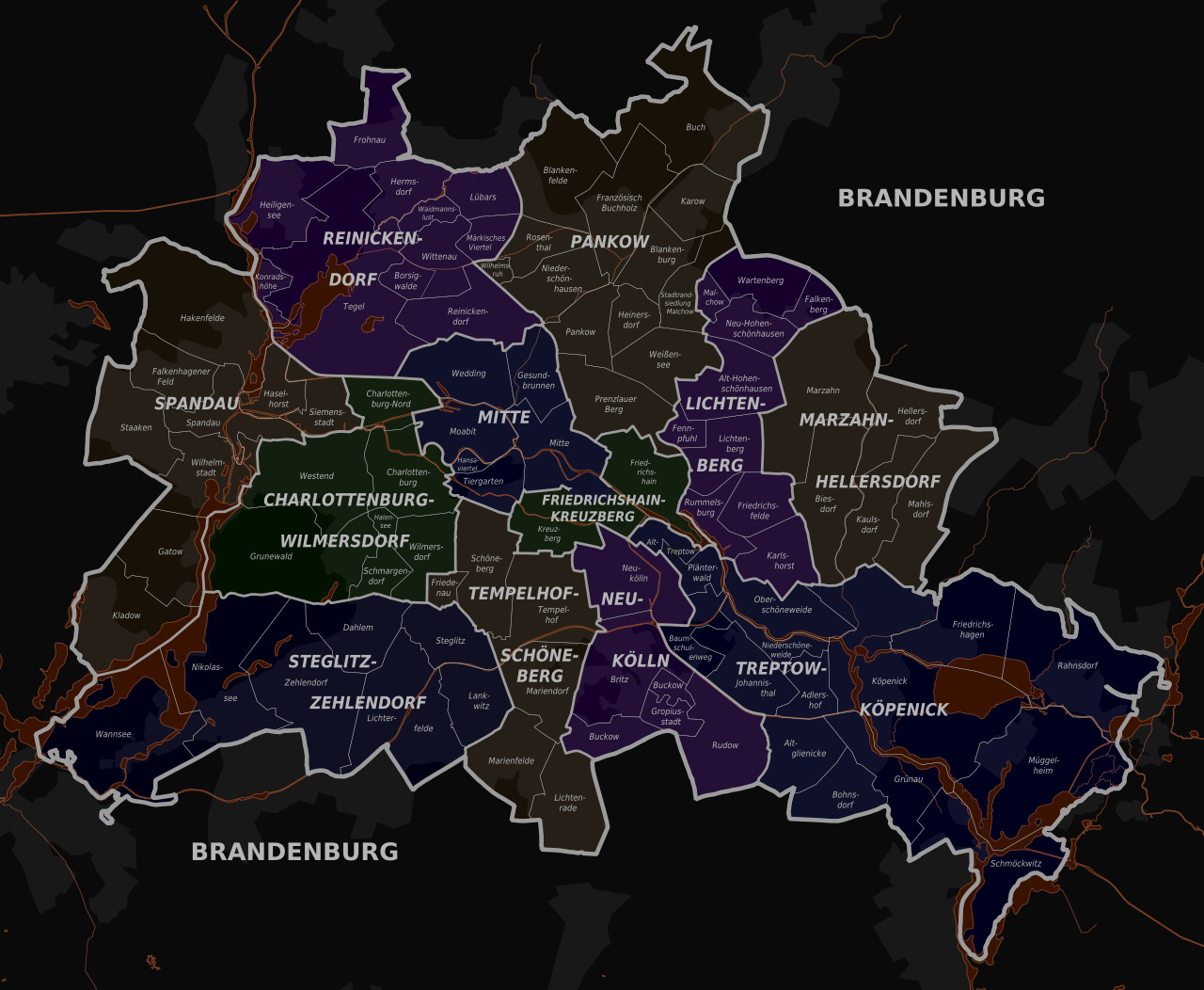
The modern city of Berlin has twenty districts, twelve in the west and eight in the eastern section of the city. In the mortal world, there districts are just smaller subsections of the greater metropolitan Berlin; to the Kindred way of thinking, things are a bit different, as each of these districts are lesser duchies ruled by an undead despot who owes his or her allegiance to the respective prince of east or west. The powerful undead who call these districts home are often jokingly refered to as burgomeisters; though over the last few decades the term has begun to lose its humorous conotation and has started to take on real authority as the struggle between the two princes of the city continues to erode the inherent authority of the princedom. As with every other facet of Berlin, the city's districts are divided into eastern and western, as seen below. Though the Burgomeisters are theoretically bound by the authority of their respective liege, the reality of the situation can often be something different alltogether; visitors to Berlin are advised to treat the Burgomeisters with respect, for in the absense of centralized power - accidents happen.
Ost-Berliner: East Berlin
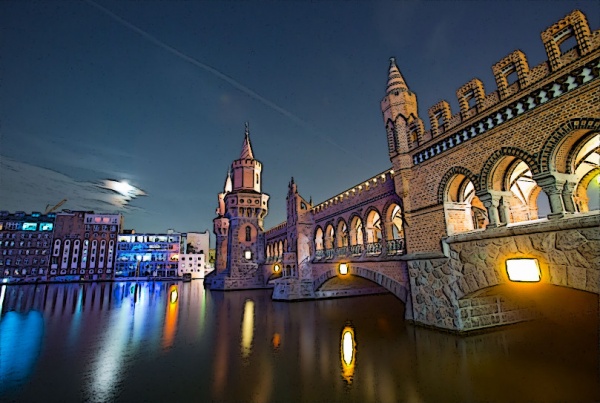 Friedrichshain Friedrichshain Formerly part of East Berlin, it is adjacent to Mitte, Prenzlauer Berg, Kreuzberg, Lichtenberg and is one of the trendy districts of Berlin and has experienced gentrification. |
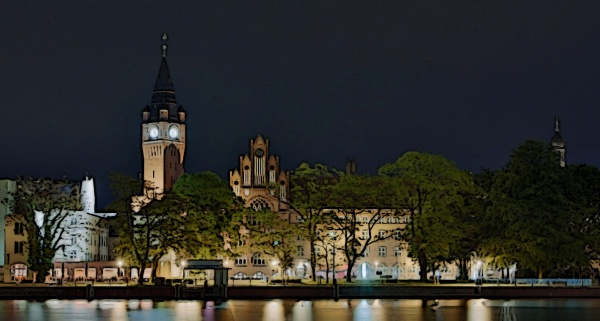 Kopenick Kopenick is a historic town and locality that is situated at the confluence of the rivers Dahme and Spree in the south-east of Berlin. Prior to its incorporation into Berlin in 1920, Köpenick was an independent town. It then became a borough of Berlin, with an area of 128 km2 (49 sq mi), making it Berlin's largest borough. In Berlin's 2001 administrative reform, the borough of Köpenick was merged with that of Treptow to create the current borough of Treptow-Köpenick. |
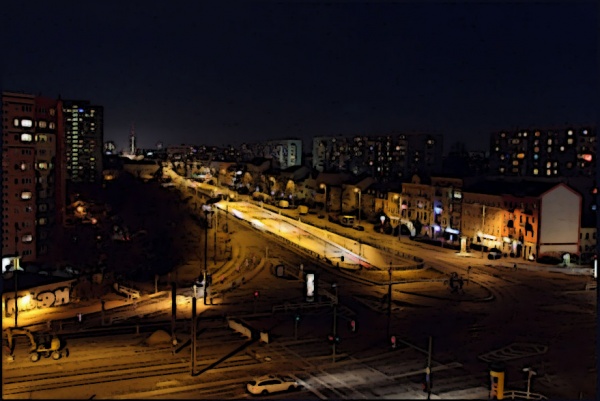 Lichtenberg Lichtenberg is the eleventh borough of Berlin, Germany. In Berlin's 2001 administrative reform it absorbed the former borough of Hohenschönhausen. |
 Mitte Mitte Mitte is the first and most central borough of Berlin. It was created in Berlin's 2001 administrative reform by the merger of the former districts of Mitte proper, Tiergarten and Wedding; the resulting borough retained the name Mitte. It is one of the two boroughs (beside Friedrichshain-Kreuzberg) which comprises former West and East Berlin districts. Mitte encompasses Berlin's historic core and includes some of the most important tourist sites of Berlin. |
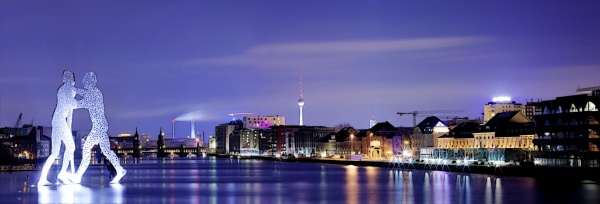 Pankow Pankow is the most populous and the second-largest borough of Berlin. In Berlin's 2001 administrative reform it was merged with the former boroughs of Prenzlauer Berg and Weißensee; the resulting borough retained the name Pankow. |
| 600px Prenzlaur Berg is the southerly and most urban part of the district of Pankow. Since its founding in 1920 until 2001, Prenzlauer Berg was a district of Berlin in its own right. However, that year it was incorporated (along with the borough of Weißensee) into the greater district of Pankow. From the 1960s onward, Prenzlauer Berg has been associated with proponents of East Germany's diverse counterculture including Christian activists bohemians, state-independent artists, and the gay community. It was an important site for the peaceful revolution that brought down the Berlin Wall in 1989. In the 1990s the borough was also home to a vibrant squatting scene. It has since experienced rapid gentrification. |
| 600px Treptow is a former borough in the southeast of Berlin. It merged with Köpenick to form Treptow-Köpenick in 2001. |
| 600px Weissensee Before Berlin's 2001 administrative reform, Weißensee was a borough in its own right, consisting of the localities of Weißensee, Heinersdorf, Blankenburg, Karow and Stadtrandsiedlung Malchow. As Berlin's least inhabited district, it has been overshadowed historically by its neighboring boroughs Prenzlauer Berg and Pankow. However its popularity is increasing due to its proximity to the hip but expensive Prenzlauer Berg. Its trams make reaching Mitte very convenient. |
West-Berliner: West Berlin
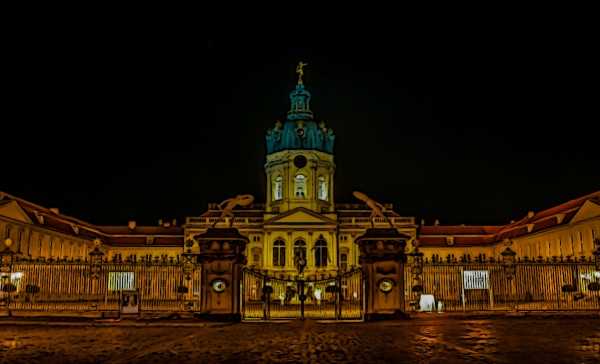 Charlottenburg Charlottenburg If West Berlin has a true heart, then that heart is Charlottenburg. The primary center of commerce for Berlin and Germany, Charlottenburg is a teeming, cluttered area best compared to Manhattan, with a twist of Washington D.C. on the side. From here Wilhelm rules rules his Kindred, and from here the kine rule the industries that have made Berlin the city it is tonight. Museums, nightclubs, hotels, and schools fill Charlottenburg. Unlike many parts of Germany, Charlottenburg never sleeps. It is the very heart of Berlin, and the very heart of Ventrue dominance over other Kindred. Charlottenburg also has an international reputation for its number of exceptional museums, and is loved by the Toreador as a center of culture in Europe. Wilhelm has declared most of the museums to be Elysium. |
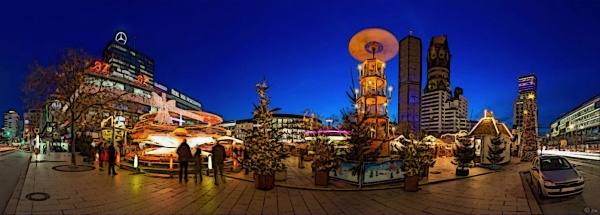 Kurfurstendamm Kurfurstendamm Kurfurstendamm, or Ku'damm as it is often called, is West Berlin's best known strip for shopping and entertainment. The area runs from Charlottenburg all the way to Wilmersdorf, and pulses with a life all its own. The Ku'damm is also one part of Charlottenburg that the Ventrue simple cannot control. Riots break out here with surprising regularity, and generally take the form of racial protests against "impurities" brought by the foreign populations in Berlin. Protests both formal and spontaneous, erupt in the area virtually every weekend. To some Berliners, these protests provide an excuse to blow off tensions built up during a hectic week, but the protests have recently grown more violent in nature and more vicious in spirit. From his relative safety in the crowd, Dieter Kotlar watches in amusement. As often as not, his Final Reich joins in the resulting protests and violence. |
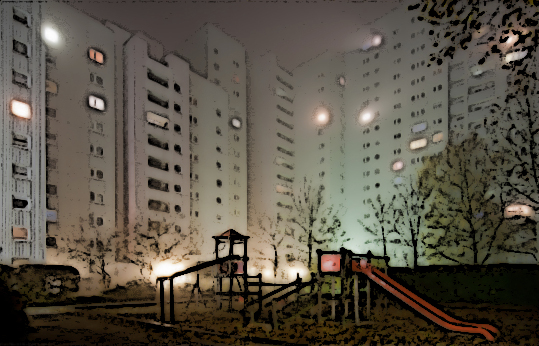 Gropiusstadt Gropiusstadt Gropius City, designed to handle Berlin's increasing population problems, is one of the largest residential areas in the city. With more than 18,000 residential dwellings, the area is almost a city within a city. Several years ago, an unknown Kindred arrived within this sub-city, promising to rule fairly and allow free voting should the Kindred of the area agree to separate themselves from the city of Berlin proper. The first Kindred he met were all Malkavians. As is their wont, the Lunatics drew straws to decide what to do. After deciding, the criminal mastermind Edward Hyde contacted a pack of violent anarchs called the "Hunting Party" and politely invited them over for a bite-to-eat. The last that was seen of the would-be prince was his screaming form begging for mercy as he was dragged away before the Hunting Party settled in for dinner. A splinter group of Berlin's Malkavian community who call themselves "The Straitjacket Dancing Club of West Berlin" have claimed the area as their own. To date, the Dancing Club seems primarily interested in visiting the small clubs in the area, and dancing the night away in their "fashionable?" tie-dyed straitjackets. Most Kindred now avoid this area of Berlin. |
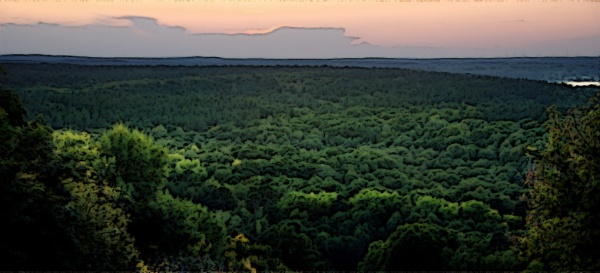 Grunewald Forest Grunewald Forest Grunwald forest lies east of the Havel river, and is forbidden to all Kindred. Any Kindred caught in the area is unlikely to be seen again, most likely hunted down and destroyed by one of the packs of Lupines who rule the forest as their private kingdom. Prince Wilhelm severely punishes those few Kindred who have actually entered Grunewald and survived to brag of it Those Kindred with Lupine Lore may know that a Lupine caern rests here, and that the Lupines would eagerly die one and all to protect it. Known only to a select few, this caern has a Moon-Bridge to the Black Forest, and Moots are frequently held here by the Get of Fenris. However, Grunewald contains a place terrifying to both Kindred and Lupines -- Teufelsberg, the Devil's Mountain. On any given night, shrieks and wails of pain from beneath the man-made mountain fill the air around Teufelsburg; the more sensitive avoid the area, and even kine who are not perceptive about the supernatural find themselves uncomfortable if they stay in the area too long after sunset. Berliners built Teufelsburg out of the huge piles of rubble left over from World War II. More than thirty-three million (33,000,000) cubic yards of debris were used in the construction of this mountain, which rises 377 feet above the surrounding area. Kine consider this area a fine region for skiing in the winter and hiking in the summer, but to the Kindred, psychically aware humans and the Lupines, the low indecipherable susurration emanating from the depths of the mountain are a constant cause of worry. The Nosferatu of Berlin say that the Devil's Mountain is the final resting place of those poor Kindred long ago used by the Nazis in genetic experiments. The few Kindred of Berlin who have direct contact with the Lupines of Grunewald, say that the werewolves believe that the Nazis constructed a supernatural prison beneath Teufelsburg where they experimented on all the Awakened species. This urban legend has survived for decades among both Kindred and Lupines, and is commonly referred to as "Project Werewolf". Of course, no evidence of such a thing has ever been found, and not even the Malkavians of Berlin have been crazy enough to start excavating for actual, concrete proof. Ironically, the one part of Grunewald open to the Kindred of Berlin is the one part that the more sensitive do their best to avoid. Even some of Berlin's kine have commented about the sense of foreboding evil that radiates from Teufelsberg, and while the Nosferatu of the capital regularly monitor the place, even they do their surveillance at a distance. Of all the terrifying creatures that inhabit the city of Berlin, theoretically whatever rests at the bottom of Teufelsberg, while never seen, is believed to by the most monstrous. The barely perceptible aroma of freshly spilled blood permeates the air surrounding the Devil's Mountain and entices hungry Kindred into the area. Among the Kindred of Berlin, one individual is considered a scholar and expert on Teufelsberg, the Nosferatu called Ugly Rasputin. If approached on the topic of the Devil's Mountain, Ugly Rasputin will discuss the matter at length, but his expertise isn't free or even cheap. Still no where else in Berlin can one find factual information on a such a forbidding and forbidden location. As a grim testament of Teufelsberg's reputation, Ugly Rasputin asks for payment in advance from those who wish detailed information concerning the Devil's Mountain. |
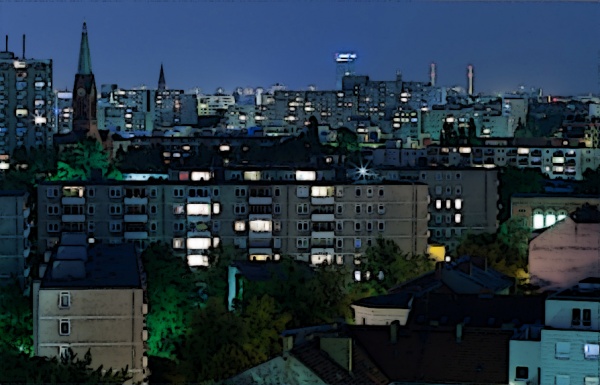 Kreuzberg Kreuzberg Kreuzberg stands out among Kindred for two reasons. The first is the Berlin Story Museum, dedicated to the city's history. It contains scale model landscapes of Berlin as it looked from the 16th century to present times and is one of the most protected sites of all the Berlin Elysium. No Kindred would dare assault this building for fear of retribution from virtually every other vampire in the city. The Kindred of Berlin hold their city in great esteem, and this monument is akin to sacred ground in the eyes of most. The other reason for Kreuzberg's importance is that it is one of the only sections of Berlin without a formal Burgomeister. Frankly, few Kindred want to make their homes in the smallest and most heavily populated sections of Berlin, though they enjoy feeding here and visiting the museum -- or just making trouble. Additionally, anarchs and the Final Reich come here to bash some heads. Kreuzberg enjoyed a heavy influx of foreigners, with Turks making up more than one-fifth of the population. Substantial numbers of other foreign families also live in the area. The district has become known as a place for just about every type of person to hangout. Anyone, from the rich and famous, to the poor and infamous can be found here. The Final Reich has rolled through this section on several occasions, hell-bent on driving the entire foreign population away. Police have had to break up riotous fights and combat the cases of arson that breakout whenever the Reich makes its presence known. White supremacists have killed hundreds of people here in their attempts to drive all foreigners from Berlin. Prince Wilhelm's best efforts to stop the Reich have met with failure and frustration as Dieter Kotlar smiles, shrugs and explains that: "the population has to be controlled. Since Prince Wilhelm seems unable to control the influx of foreigners, somebody has to carry his slack." Kotlar publicly condemns the vandalism, even though he has been spotted at the center of such activities on numerous occasions. In spite of his smugness, Dieter Kotlar has not discovered the slow infiltration of Setites and Assamites within this area. Wilhelm has grown tired of the civic unrest, but is tolerating their increase, although Ellison has protested this particular policy. The leader of the Berlin Nosferatu fears that an increase in non-Camarilla clans could lead to even greater upheaval. Privately and on more than one occasion, Wilhelm has said that were the Final Reich to "disappear" or leave the city, then the situation could be resolved diplomatically. However, obviously, not everyone agrees with the prince of the west. |
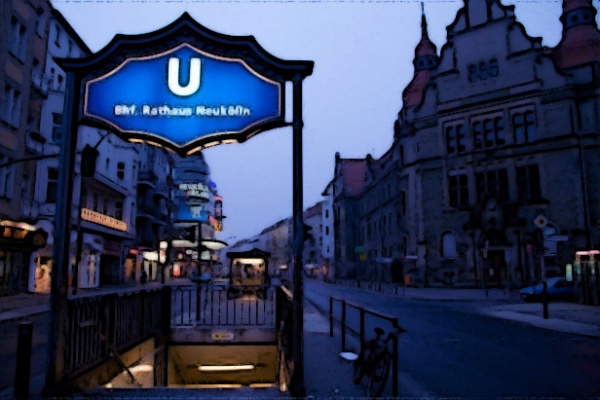 Neukolln Neukolln Neukölln can best be described as sparsely populated, especially when compared to the rest of Berlin. It is said that, visiting Gangrel often stay here, for the district's primary claim to fame is the Hasenheide Park, a 138 acre park open to the public. Amongst the supernatural community, it is a well known fact that Hasenheide park attracts Lupine visitors, but they are almost certainly not the same Lupines that roam so freely through the Grunewald. For centuries, stories have circulated through the Kindred court of Berlin about sightings of Faeries in Hasenheide park and of a magical gateway that leads to their eldritch kingdom in another dimension. These stories always follow rumors of visiting Kindred meeting fay royalty and being taken elsewhere to labyrinthine palaces where they are feted as special guests, drinking faerie wine, magical foods and occasionally the blood of faerie nobles. More than likely, these stories are the result of joint Malkavian and Ravnos pranks carried out over several generations. For reasons unknown, most Kindred encountered in this region are of these two clans, although Kindred encounters are rare here as there is no Burgomeister or resident vampires. While Hasenheide park is primarily a quiet and enchanting green-space, it has had a consistent reputation for being one location among many where the undead can consistently meet with The Brothers Grimm. |
 Pfauseninsel Pfauseninsel Natural growth once covered Peacock Island, but that changed in the latter part of the 18th century when the Kaiser had it turned into a playground for his favorite few. Now the kine have turned it into a public park. To the Kindred, however, the island represents both finer times now past and a victory over the Lupines who once inhabited the island. A museum which used to be a castle and several smaller buildings rest on the island, designed to show modern-day kine what was once the glory of Berlin. |
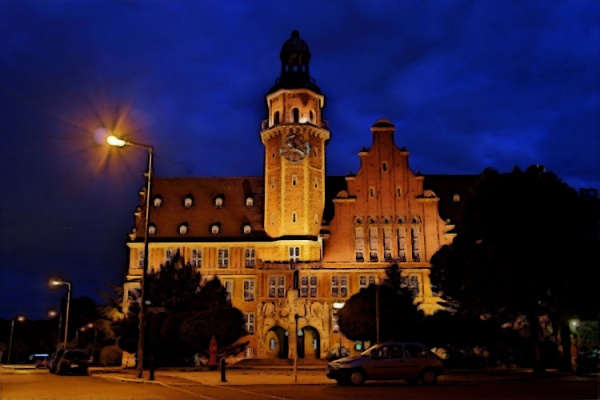 Reinickendorf Reinickendorf Reinickendorf houses possibly the most terrifying threat to the Kindred of Berlin -- Tegel Airport. The main airport for anyone coming to Berlin, for years Tegel provided the only means of entering or leaving West Berlin, and it is still considered part of Elysium.
|
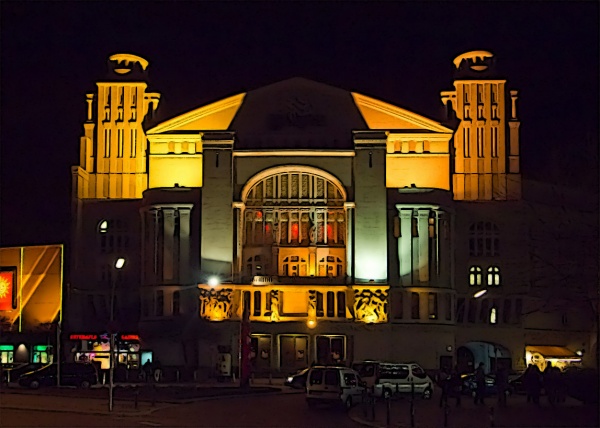 Schoneberg Schoneberg ' |
 Sterglitz, Steglitz-Zehlendorf Sterglitz, Steglitz-Zehlendorf ' |
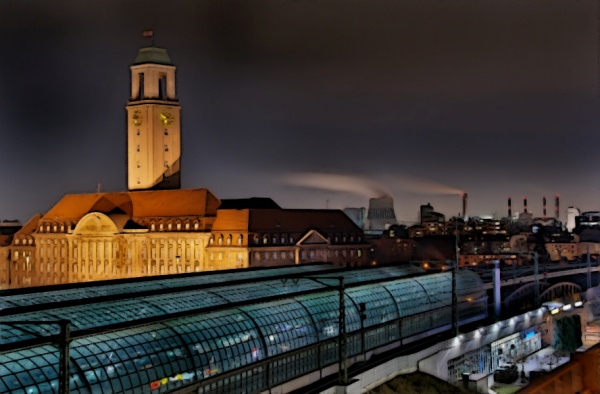 Spandau Spandau ' |
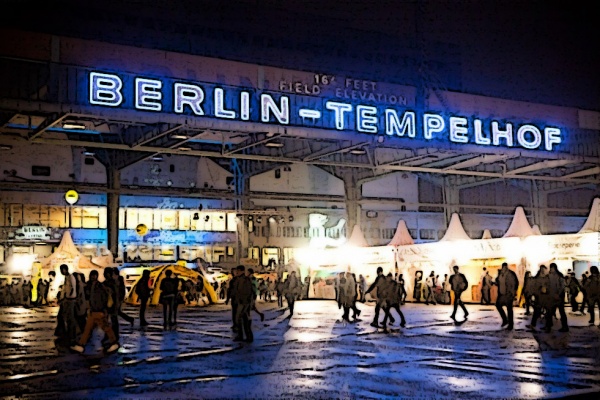 Tempelhof Tempelhof ' |
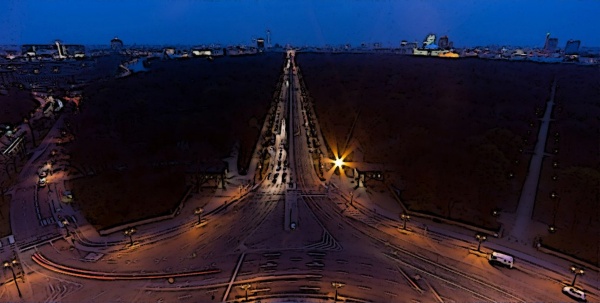 Tiergarten Tiergarten ' |
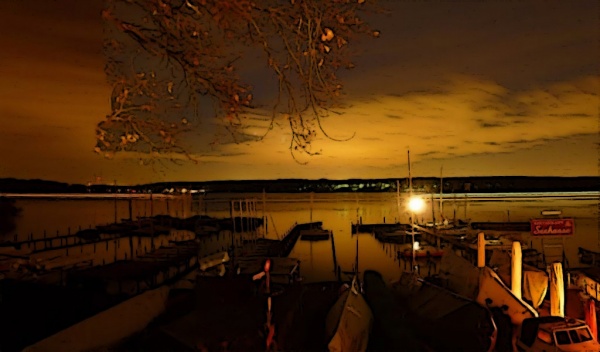 Wannsee Wannsee ' |
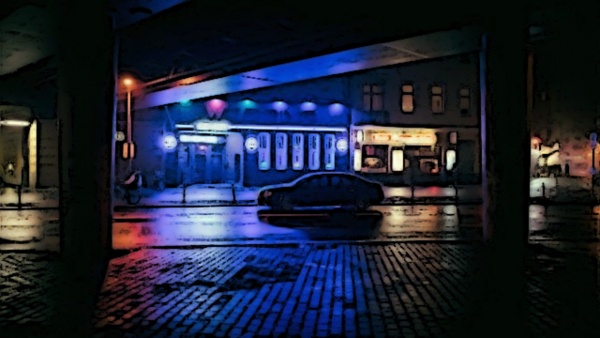 Wedding (Berlin) Wedding (Berlin) ' |
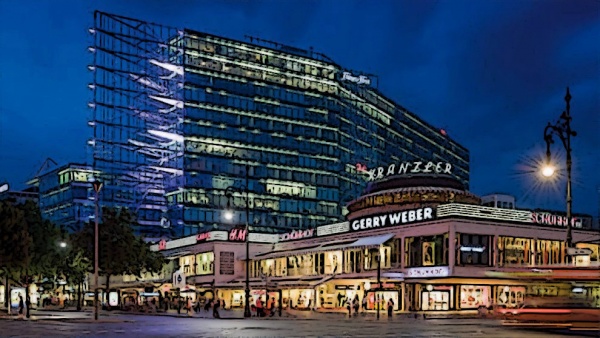 Wilmersdorf Wilmersdorf ' |
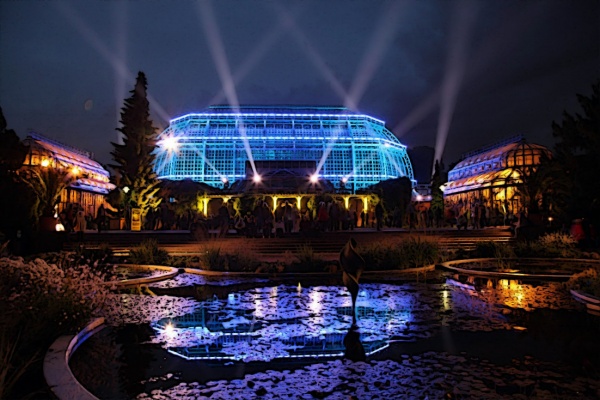 Zehlendorf Zehlendorf ' |
Das Wörterbuch: The Dictionary
Demonym
Berliner
Etymology
The origin of the name Berlin is uncertain. It may have roots in the language of West Slavic inhabitants of the area of today's Berlin, and may be related to the Old Polabian stem berl-/birl- ("swamp"). Folk etymology connects the name to the German word for bear, Bär. A bear also appears in the coat of arms of the city.
Economy
Geography
Topography
Berlin is situated in northeastern Germany, in an area of low-lying marshy woodlands with a mainly flat topography, part of the vast Northern European Plain which stretches all the way from northern France to western Russia. The Berliner Urstromtal (an ice age glacial valley), between the low Barnim Plateau to the north and the Teltow Plateau to the south, was formed by meltwater flowing from ice sheets at the end of the last Weichselian glaciation. The Spree follows this valley now. In Spandau, a borough in the west of Berlin, the Spree empties into the river Havel, which flows from north to south through western Berlin. The course of the Havel is more like a chain of lakes, the largest being the Tegeler See and the Großer Wannsee. A series of lakes also feeds into the upper Spree, which flows through the Großer Müggelsee in eastern Berlin.
Substantial parts of present-day Berlin extend onto the low plateaus on both sides of the Spree Valley. Large parts of the boroughs Reinickendorf and Pankow lie on the Barnim Plateau, while most of the boroughs of Charlottenburg-Wilmersdorf, Steglitz-Zehlendorf, Tempelhof-Schöneberg, and Neukölln lie on the Teltow Plateau.
The borough of Spandau lies partly within the Berlin Glacial Valley and partly on the Nauen Plain, which stretches to the west of Berlin. Since 2015, the highest elevation in Berlin is found on the Arkenberge hills in Pankow, at 122 m (400 ft). Through the dumping of construction debris, they surpassed Teufelsberg (120.1 m), a hill made of rubble from the ruins of the Second World War.[60] The highest natural elevation is found on the Müggelberge at 114.7 m, and the lowest at the Spektesee in Spandau, at 28.1 m (92 ft).
Cityscape
Berlin's history has left the city with a highly eclectic array of architecture and buildings. The city's appearance today is predominantly shaped by the key role it played in Germany's history in the 20th century. Each of the national governments based in Berlin – the Kingdom of Prussia, the 1871 German Empire, the Weimar Republic, Nazi Germany, East Germany, and now the reunified Germany – initiated ambitious reconstruction programs, with each adding its own distinctive style to the city's architecture.
Berlin was devastated by bombing raids, fires and street battles during World War II, and many of the buildings that had remained after the war were demolished in the post-war period in both West and East Berlin. Much of this demolition was initiated by municipal architecture programs to build new residential or business quarters and main roads. Many ornaments of pre-war buildings were destroyed following modernist dogmas. While in both systems and in reunified Berlin, various important heritage monuments were also (partly) reconstructed, including the Forum Fridericianum with e.g., the State Opera (1955), Charlottenburg Palace (1957), the main monuments of the Gendarmenmarkt (1980s), Kommandantur (2003) and the project to reconstruct the baroque façades of the City Palace. A number of new buildings is inspired by historical predecessors or the general classical style of Berlin, such as Hotel Adlon.
Clusters of high-rise buildings emerge at e.g., Potsdamer Platz, City West and Alexanderplatz. Berlin has three of the top 40 tallest buildings in Germany.
Der Geschichte Berlins: History of the City
12th through the 16th centuries
The earliest evidence of settlements in the area of today's Berlin are a wooden rod dated from approximately 1192 and leftovers of wooden house-parts dated to 1174 found in a 2012 excavation in Berlin Mitte. The first written records of towns in the area of present-day Berlin date from the late 12th century. Spandau is first mentioned in 1197 and Köpenick in 1209, although these areas did not join Berlin until 1920. The central part of Berlin can be traced back to two towns. Cölln on the Fischerinsel is first mentioned in a 1237 document, and Berlin, across the Spree in what is now called the Nikolaiviertel, is referenced in a document from 1244. 1237 is considered the founding date of the city. The two towns over time formed close economic and social ties, and profited from the staple right on the two important trade routes Via Imperii and from Brügge to Novgorod. In 1307, they formed an alliance with a common external policy, their internal administrations still being separated.
Humans, led by Albrecht (al-Brecht) the Bear, first settled the area now called Berlin in A.D. 1134. Albrecht became markgraf (count) of the area, then known as the Northern March or Nordmark.
The region's Kindred made their presence known within three years.
In 1415, Frederick I became the elector of the Margraviate of Brandenburg, which he ruled until 1440. During the 15th century, his successors established Berlin-Cölln as capital of the margraviate, and subsequent members of the Hohenzollern family ruled in Berlin until 1918, first as electors of Brandenburg, then as kings of Prussia, and eventually as German emperors. In 1443, Frederick II Irontooth started the construction of a new royal palace in the twin city Berlin-Cölln. The protests of the town citizens against the building culminated in 1448, in the "Berlin Indignation" ("Berliner Unwille"). This protest was not successful and the citizenry lost many of its political and economic privileges. After the royal palace was finished in 1451, it gradually came into use. From 1470, with the new elector Albrecht III Achilles, Berlin-Cölln became the new royal residence. Officially, the Berlin-Cölln palace became permanent residence of the Brandenburg electors of the Hohenzollerns from 1486, when John Cicero came to power. Berlin-Cölln, however, had to give up its status as a free Hanseatic city. In 1539, the electors and the city officially became Lutheran.
17th through the 19th centuries
The Thirty Years' War between 1618 and 1648 devastated Berlin. One third of its houses were damaged or destroyed, and the city lost half of its population. Frederick William, known as the "Great Elector", who had succeeded his father George William as ruler in 1640, initiated a policy of promoting immigration and religious tolerance. With the Edict of Potsdam in 1685, Frederick William offered asylum to the French Huguenots. By 1700, approximately 30 percent of Berlin's residents were French, because of the Huguenot immigration. Many other immigrants came from Bohemia, Poland, and Salzburg.
Since 1618, the Margraviate of Brandenburg had been in personal union with the Duchy of Prussia. In 1701, the dual state formed the Kingdom of Prussia, as Frederick III, Elector of Brandenburg crowned himself as king Frederick I in Prussia. Berlin became the capital of the new Kingdom. This was a successful attempt to centralize the capital in the very outspread state, and it was the first time the city began to grow. In 1709, Berlin merged with the four cities of Cölln, Friedrichswerder, Friedrichstadt and Dorotheenstadt under the name Berlin, "Haupt- und Residenzstadt Berlin".
In 1740, Frederick II, known as Frederick the Great (1740–1786), came to power. Under the rule of Frederick II, Berlin became a center of the Enlightenment, but also, was briefly occupied during the Seven Years' War by the Russian army. Following France's victory in the War of the Fourth Coalition, Napoleon Bonaparte marched into Berlin in 1806, but granted self-government to the city. In 1815, the city became part of the new Province of Brandenburg.
The Industrial Revolution transformed Berlin during the 19th century; the city's economy and population expanded dramatically, and it became the main railway hub and economic center of Germany. Additional suburbs soon developed and increased the area and population of Berlin. In 1861, neighboring suburbs including Wedding, Moabit and several others were incorporated into Berlin. In 1871, Berlin became capital of the newly founded German Empire. In 1881, it became a city district separate from Brandenburg.
20th through the 21st centuries
In the early 20th century, Berlin had become a fertile ground for the German Expressionist movement. In fields such as architecture, painting and cinema new forms of artistic styles were invented. At the end of the First World War in 1918, a republic was proclaimed by Philipp Scheidemann at the Reichstag building. In 1920, the Greater Berlin Act incorporated dozens of suburban cities, villages and estates around Berlin into an expanded city. The act increased the area of Berlin from 66 to 883 km2 (25 to 341 sq mi). The population almost doubled and Berlin had a population of around four million. During the Weimar era, Berlin underwent political unrest due to economic uncertainties, but also became a renowned center of the Roaring Twenties. The metropolis experienced its heyday as a major world capital and was known for its leadership roles in science, technology, arts, the humanities, city planning, film, higher education, government and industries. Albert Einstein rose to public prominence during his years in Berlin, being awarded the Nobel Prize for Physics in 1921.
In 1933, Adolf Hitler and the Nazi Party came to power. NSDAP rule diminished Berlin's Jewish community from 160,000 (one-third of all Jews in the country) to about 80,000 as a result of emigration between 1933 and 1939. After Kristallnacht in 1938, thousands of the city's Jews were imprisoned in the nearby Sachsenhausen concentration camp. Starting in early 1943, many were shipped to death camps, such as Auschwitz. During World War II, large parts of Berlin were destroyed in the 1943–45 air raids and during the Battle of Berlin. Around 125,000 civilians were killed. After the end of the war in Europe in May 1945, Berlin received large numbers of refugees from the Eastern provinces. The victorious powers divided the city into four sectors, analogous to the occupation zones into which Germany was divided. The sectors of the Western Allies (the United States, the United Kingdom and France) formed West Berlin, while the Soviet sector formed East Berlin.
All four Allies shared administrative responsibilities for Berlin. However, in 1948, when the Western Allies extended the currency reform in the Western zones of Germany to the three western sectors of Berlin, the Soviet Union imposed a blockade on the access routes to and from West Berlin, which lay entirely inside Soviet-controlled territory. The Berlin airlift, conducted by the three western Allies, overcame this blockade by supplying food and other supplies to the city from June 1948 to May 1949. In 1949, the Federal Republic of Germany was founded in West Germany and eventually included all of the American, British and French zones, excluding those three countries' zones in Berlin, while the Marxist-Leninist German Democratic Republic was proclaimed in East Germany. West Berlin officially remained an occupied city, but it politically was aligned with the Federal Republic of Germany despite West Berlin's geographic isolation. Airline service to West Berlin was granted only to American, British and French airlines.
The founding of the two German states increased Cold War tensions. West Berlin was surrounded by East German territory, and East Germany proclaimed the Eastern part as its capital, a move that was not recognized by the western powers. East Berlin included most of the historic center of the city. The West German government established itself in Bonn. In 1961, East Germany began the building of the Berlin Wall between East and West Berlin, and events escalated to a tank standoff at Checkpoint Charlie. West Berlin was now de facto a part of West Germany with a unique legal status, while East Berlin was de facto a part of East Germany. John F. Kennedy gave his "Ich bin ein Berliner" – speech in 1963 underlining the US support for the Western part of the city. Berlin was completely divided. Although it was possible for Westerners to pass from one to the other side through strictly controlled checkpoints, for most Easterners travel to West Berlin or West Germany was prohibited by the government of East Germany. In 1971, a Four-Power agreement guaranteed access to and from West Berlin by car or train through East Germany.
In 1989, with the end of the Cold War and pressure from the East German population, the Berlin Wall fell on 9 November and was subsequently mostly demolished. Today, the "East Side Gallery" preserves a large portion of the wall. On 3 October 1990, the two parts of Germany were reunified as the Federal Republic of Germany and Berlin again became the official German capital. In 1991, the German Parliament, the Bundestag, voted to move the seat of the German capital from Bonn to Berlin, which was completed in 1999. On 18 June 1994, soldiers from the United States, France and Britain marched in a parade which was part of the ceremonies to mark the final withdrawal of foreign troops allowing a reunified Berlin. Berlin's 2001 administrative reform merged several districts. The number of boroughs was reduced from 23 to 12. In 2006, the FIFA World Cup Final was held in Berlin.
Population
- -- City (7,415,091) - 31 October 2040 census
Arenas
Attractions
- 1 -- Reichstag Building -- When the decision was made to move the Federal Government to Berlin, it was time to reawaken the Reichstag building from its long years of slumber on the Mauerstreifen, the military zone between the two sides of the Wall. The building has since been completely modernised, and today's visitors to the Reichstag can look out from the building's glass dome to get a bird's eye view of the hustle and bustle in the city. There are also a number of government buildings in the vicinity of the Reichstag, for example the Bundeskanzleramt (Federal Chancellery) and the Brandenburg Gate.
- 2 -- The Brandenburg Gate -- Without a doubt, the Brandenburg Gate is Berlin's signature attraction. Built in 1791, it was just one of many old city gates around the city of Berlin which, at that time, was still a manageable size. The decorative Pariser Platz was laid at the foot of the gate and is now home to many of the city's important buildings, for example, the Hotel Adlon with its wealth of history and the Akademie der Künste (Academy of the Arts).
- 3 -- Berlin Television Tower -- (Fernsehturm) -- The Berlin Television Tower, which is known to locals as the Fernsehturm, and is instantly recognisable from the distance, stand outs of the skyline at 368m, making it the tallest building in Berlin. Built in the 1960s, visitors to the tower can enjoy a unique 360° panorama of the city.
- 4 -- Gendarmenmarkt -- The Gendarmenmarkt is one of the most stunning squares in the city, located close to Friedrichstraße, Berlin's exclusive shopping street in the central Mitte district. Three of the most impressive examples of architecture in the capital city are to be found here: the Concert House designed by Schinkel and the German and French Cathedrals (the Deutscher Dom and the Französischer Dom).
- 5 -- Berlin Cathedral -- The German Cathedral (Berliner Dom) with its magnificent dome is a remarkable example the of late 19th century architecture. Near the Cathedral are also the German Historical Museum and the Museum’s Island. On the side of Berlin’s boulevard “Unter den Linden” stands the Catholic St.Hedwigs-Cathedral.
- 6 -- Kurfurstendamm -- Extending all the way from the ruins of the Kaiser Wilhelm Memorial Church on Breitscheidplatz to Berlin's elegant Halensee neighbourhood, the affectionately termed Ku’damm is the most expensive address in the capital city and home to the most exclusive brands. Europe's biggest department store KaDeWe is also situated on the extension of the Ku'damm, on the street known to locals as the Tauentzien (short for Tauentzienstrasse). The little ones will just love the Zoological Garden, Germany's oldest zoo.
- 7 -- Charlottenburg Palace -- The magnificent Charlottenburg Palace is located just out of the centre of the city. The beautiful palace hosts fine collections of china and paintings and is situated in the middle of a picturesque palace garden right next to the river Spree. If you don't fancy a walk in the park, you can feed your mind instead in the Charlottenburg museums located directly opposite.
- 8 -- Museum Island -- Berlin's Museum Island is one of the UNESCO world heritage sites and home to the city's most important exhibition centres: the Altes Museum (Old Museum), the Neues Museum (New Museum) the Bode Museum, the Pergamon Museum and the Alte Nationalgalerie (Old National Gallery). The collections in these buildings encompass over 6,000 years of art and cultural history.
- 9 -- The Berlin Wall Memorial and Documentation Centre -- The Gedenkstätte Berliner Mauer (Berlin Wall Memorial) is located between the districts of Wedding and Mitte on Bernauer Straße, consisting of the Memorial to the Victims of the Wall, a Documentation Centre and the Chapel of Reconciliation. The surviving section of the wall and watchtower enable visitors to get a real feel for the reality of the border facilities. The Memorial has been undergoing extension work in recent years, the full completion of which is intended for 2014.
- 10 -- Potsdamer Platz -- Once the bustling heart of the city before the Second World War, then a no man's land from 1945 until the fall of the wall, the history of Potsdamer Platz has been eventful to say the least. It changed completely after the fall of the wall in 1989 and is now dominated by the presence of the Sony Center, skyscrapers and endless shops. What's more, Potsdamer Platz is the main place to be for stars and celebrities, and not only during film festivals.
Bars and Clubs
Cemeteries
- -- Alter St.Matthäus Kirchhof -- {Old St. Matthew's Churchyard} -- is a cemetery in Schöneberg. -- Burial site of the Brothers Grimm
- -- Berlin 1939–1945 Commonwealth War Graves Commission Cemetery --
- -- Berlin-Tegel Russian Orthodox Cemetery -- is the only Russian Orthodox burial ground in Berlin. It is located on Witte street in the Tegel locality of the Reinickendorf borough. It is owned and operated by the Brotherhood of St. Prince Vladimir (Bratstvo).
- -- Cemetery Dahlem -- is a cemetery in Berlin-Dahlem. The cemetery was built according to the plans of the architects Friedrich and Wilhelm Hennigs.
- -- Dorotheenstadt Cemetery -- officially the "Cemetery of the Dorotheenstadt and Friedrichswerder Parishes", is a landmarked Protestant burial ground located in the Berlin district of Mitte which dates to the late 18th century.
- -- Friedhof Heerstraße -- is located at Trakehnerallee 1 (Trakehner avenue No.1), district of Charlottenburg-Wilmersdorf in Berlin, Germany, beneath the Olympiastadion.
- -- Friedhof II der Sophiengemeinde Berlin -- is a Protestant cemetery of the Sophienkirche in Mitte.
- -- Invalidenfriedhof -- is one of the oldest cemeteries in Berlin. It was the traditional resting place of the Prussian Army, and is regarded as particularly important as a memorial to the German Wars of Liberation of 1813-15.
- -- Kaiser Wilhelm Memorial Cemetery -- The Protestant Kaiser Wilhelm Memorial Cemetery (German: Der evangelische Kaiser-Wilhelm-Gedächtnis-Friedhof) is a burial ground in the Westend district of Berlin with a size of 3.7 hectares. The cemetery is under monument and cultural heritage protection.
- -- Luisenfriedhof III -- The Protestant Luisenfriedhof III (German: Der evangelische Luisenfriedhof III) is a cemetery in the Westend district of Berlin. The cemetery is under monument and cultural heritage protection.
- -- Parochialkirche -- The Parochialkirche (literally the Reformed parochial church) is a Reformed church in the Klosterviertel neighbourhood of the Mitte borough in Berlin.
- -- Städtischer Friedhof III -- is a cemetery in the Friedenau district of the borough of Tempelhof-Schöneberg. Buried here are Ferruccio Busoni (1866–1924), Marlene Dietrich (1901–1992) and Helmut Newton (1920–2004).
- -- Waldfriedhof Dahlem -- (Dahlem forest cemetery) is a cemetery in Berlin, in the district of Steglitz-Zehlendorf on the edge of the Grunewald forest at Hüttenweg 47.
- -- Waldfriedhof Zehlendorf -- (Zehlendorf forest cemetery) is a cemetery located in Berlin's Nikolassee district. The cemetery occupies an area of 376,975 m². An additional Italian war cemetery was created there in 1953. A number of notable people of Berlin are buried at the cemetery; some have an Ehrengrab (honorary grave). In particular, all of Berlin's deceased post-war mayors are buried here.
- -- Weißensee Cemetery -- is a Jewish cemetery located in the neighborhood of Weißensee. It is the second largest Jewish cemetery in Europe. The cemetery covers approximately 42 ha (100 acres) and contains approximately 115,000 graves. It was dedicated in 1880.
- -- Zentralfriedhof Friedrichsfelde -- (German: Zentralfriedhof Friedrichsfelde), also known as the Memorial to the Socialists (German: Gedenkstätte der Sozialisten), is a cemetery in the borough of Lichtenberg in Berlin. When the cemetery was founded in 1881 it was called the Freidrichsfelde Municipal Cemetery Berlin (German: Berliner Gemeindefriedhof Friedrichsfelde). In 1919, with the burial of Wilhelm Liebknecht, founder of the Social Democratic Party (SPD), the cemetery became the resting place for many of the leaders and activists of Germany's anti-fascist, social democratic, socialist and communist movements.
City Government
Citizens of Berlin
- -- Dieter "Didi" Laberenz -- (M) -- Personal secretary for hire by Germano Giovanni.
Crime
Arab Mafia
Die Welt reported in 2016 that Berlin and Bremen have significant problems with organised crime in the form of "Arab Families," of which seven to nine[3] are criminally conspicuous and today "control most of organised crime." For example, the prostitutes in the Schöneberg neighbourhood are controlled by one family. Disputes are solved through mutually agreed mediators, who can include imams and heads of families.
Italian Organized Crime
The 'Ndrangheta, Camorra and Cosa Nostra all operate in Germany; the 'Ndrangheta has the strongest presence. There are some estimated 1200 members of the Ndrangheta active in Germany, mostly in the cocaine trade. Apart from the Ndrangheta, the Neapolitan Camorra has also infiltrated the construction industry in Germany. Furthermore, there are also five Sicilian mafia groups active in the country, but they seem to have lost power. Italian crime groups can mostly be found in the Ruhr district and in the east of Germany. Outlaw Motorcycle Gangs
OMCG's such as Hells Angels, Bandidos, Gremium and more recently, Satudarah, Night Wolves are active throughout Germany. While not all members of motorcycle clubs are criminal, some are reputed to be well known faces in the red-light districts and in the bouncer-scene who control a large chunk of the drug trade within bars and clubs.
Albanian mafia
Albanian mafia families are active in some of the German urban centres, in particular Hamburg. They play an important role in the drug trade and the red light districts of the country.
"Ethnic Albanians" (as the German police officially calls them), who come into Germany typically from Albania or the Republic of Macedonia or Kosovo, have created a very powerful criminal network. Albanian "banks" in Germany are a special story. They are used for the transfer of money from Germany, which amounts to a billion of D-marks a year. The money laundering by these criminals is efficient and relatively clean. While mortal society has tried, they have yet to pierce the veil of the Albanian banks.
BND reports state that Albanian Mafia activities are thoroughly spread throughout Germany. The clan has considerable ties to police, judges and prosecutors in Hamburg.
Russian mafia
Russian-speaking crime groups, in particular the Tambov gang are active in cities such as Düsseldorf. Especially money laundering, prostitution and extortion seem to be their activities of choice. Russian criminal activity doesn't only concern ethnic Russians but also Russian Jews. Aside from the Russian groups, Georgian, Azerbaijani and Chechen crime groups are active in Germany as well. Very often these gangs and the Russian groups are named together in one breath even when they have little to do with each other.
Another major form of Russian-speaking organized crime in Germany consists of so-called criminal Aussiedler families. Aussiedlers are ethnic Germans (also called Volga Germans) that were born in the former Soviet Union. While a lot of Aussiedlers adapted well and quickly mastered the German language, a lot of families held unto the traditional lifestyle they lived in Russia and surrounding states. This led to the formation of individual as well as clan-based groups of Aussiedlers involved in organized criminal activities such as drug trafficking, extortion, prostitution,...as well as extreme violence. Due to the large number of Aussiedlers they are seen as the major form of Russian organized crime in Germany.
Serbian mafia
The Zemun clan is active in Germany in drug trafficking and prostitution. Members are largely ethnic Serbs, some of them former soldiers, but Montenegrins and Bosniaks from the Serbian region of Sandzak are part of the ex-Yugoslavian gangs as well.
Turkish and Kurdish organized crime
Turkish crime groups which consist of ethnic Turks and/or ethnic Kurds from Turkey are active throughout Germany in extortion, weapon trafficking and drug trafficking. Often the gangs can be linked to political groups from their home country, such as the Grey Wolves for right-wing Turks and Dev Sol for left-wing Turks and Kurds.
Middle Eastern crime clans
Middle Eastern crime clans have become a major player in the underworld of Germany since the mass emigration of large Middle Eastern families, also called Großfamilie. Especially in cities such as Berlin, Hamburg and Bremen Middle Eastern clans are highly active in the trafficking of heroin as well as being involved in the bouncer-scene. Middle Eastern crime families mostly have origins in Lebanon, Afghanistan (mainly in Hamburg) and Morocco (mostly in Frankfurt).
Middle Eastern crime clans come from different backgrounds, but the most numerous of them are the Lebanese Mhallami clans such as the Al-Zein Clan and the Miri clan among others. Lebanese clans are active in drug trafficking, including Afghan heroin, cocaine, hashish and methamphetamine, weapon trafficking, extortion, prostitution and loan sharking. The main center of Lebanese organized crime in Germany is Berlin, with other clans spread in Bremen and Essen.[10][11]
Afghan criminal clans (often of Pathan background) are active in Hamburg, a city with a large Afghan population. Like the Turkish and Turkish-Kurdish as well as Albanian gangs in the city, Afghan organized crime is active in hashish and heroin trafficking, extortion and prostitution.
Moroccan organized crime groups, often of Riffian descent, on the other hand have been reported in Frankfurt. Next to Serbian mafia and Balkan gangs, Moroccan organized crime has become one of the main factors in the Frankfurt underworld active in the heroin trade as well as other criminal activities.
Vietnamese crime groups
Vietnamese groups active in human trafficking and cigarette smuggling have been reported in Germany. Chinese Triads on the other hand have been reported but don't seem to have substantial power in Germany
Die Sterblichen Massen: Mortal Society
- -- Luitgard Huber -- German woman
Witch Hunters
- -- The Inquisition -- Also known as, the Society of Leopold.
- -- Teutonic Order -- Also known as, the Order of Brothers of the German House of Saint Mary in Jerusalem is a Catholic religious order originally founded as a military order in the 12th century in Acre. Purely religious since 1929, it still confers limited honorary knighthoods.
Current Events
Foreign Consulates (149)
Fortifications
Galleries
Holy Ground
Hospitals
- Charité - Universitätsmedizin Berlin
- DRK Kliniken Berlin Westend
- St. Joseph-Krankenhaus
- Franziskus-Krankenhaus
- Martin Luther Hospital
- Meoclinic
- Unfallkrankenhaus Berlin
- Vivantes Klinikum im Friedrichshain: Geburtsmedizin
Hotels & Hostels
Landmarks
- -- The Brandenburg Gate
- -- The Europa Center -- Elysium
- -- Gendarmenmarkt
- -- International Congress Center -- Elysium
- -- The Kaiser Wilhelm Memorial Church -- Elysium
- -- Reichstag Building
Law Enforcement
The Berliner Polizei (Berlin Police) is the German Landespolizei force for the city-state of Berlin. Law enforcement in Germany is divided between federal and state (Land) agencies.
Maps
Mass Media
Newspapers
- Junge Welt (jW)
- Die Welt
- Der Tagesspiegel
- Die Zeit
Television
- N24
- rbb Fernessen
- TV Berlin
Monuments
- -- Victory Tower --
Multinational Corporations
Museums
Berlin has a surprising number of museums that stay open past dark, and Kindred can visit without the necessity of Dominating or bribing a guard for the privilege. While most still close by six P.M., a number of toreador favorites have certain rights when they remain open well beyond sunset.
For example, the Berlin Film Museum is open on Wednesdays and Saturdays until 11 P.M. for the express purpose of showing historic films, and the Berlin National Art Gallery remains opn until 10 P.M. every night. for obvious reasons, the Prince of West Berlin insists on a strict rule of Elysium in these museums and, at the insistence of the Toreador elder, has included all other museums as well. the toreador normally spend a good deal of their time in the museums and will enforce the Elysium at any cost.
The only way to gain entrance to other museums after dark is to Dominate or bribe the guards that work there; most of the Kindred simply do not believe that the reward gained in these circumstances is worth the effort involved. The Toreador have managed to gain access to all of the museums in Berlin, and as often as not have havens inside them in case of emergencies. the one possible exception to this rule is the Egyptian Museum.
While East Berlin also has a number of museums, these are not as strongly protected for the simple reason that there are no Toreador save Thomas De Lutrius in the eastern half of the city. Gustav's long-lasting grudge against the clan has kept them from repopulating the city since World War II, and Gustav has almost always found a way to either exile visiting Toreador or gather evidence to support having them killed.
The one museum excepted from this, and which toreador from around theEastern Block used to visit, is the Otto-Nagel Haus, a "proletarian revolutionary art museum" open on Wednesdays until 10 P.M. Wednesday is the one night of the week in which a Toreador may walk through Easter Berlin without fear of molestation, provided he or she has presented themselves to the Prince.
Museum Locations
Kruezberg
Mitte
Museum Island
- -- Altes Museum: Roman and Greek Classical Antiquities
- -- Alte Nationalgalerie: 19th century sculptures and paintings.
- -- Berliner Stadtschloss -- The Berlin City Palace was a royal and imperial palace in the center of Berlin, the historical capital of Prussia, and subsequently Germany. It was located on the Museum Island at Schlossplatz, opposite the Lustgarten park. It was the winter residence of the Kings of Prussia and the German Emperors. In 2013 work started on reconstruction and a part of the exterior of the palace has been rebuilt. The completion is expected in 2019.
- -- Bode-Museum: the Numismatic Collection, Sculpture Collection and the Museum of Byzantine Art
- -- Neues Museum: the Egyptian Museum of Berlin and its Papyrus Collection, and the Museum für Vor- und Frühgeschichte (Prehistory and Early History)
- -- Pergamon Museum: the Antikensammlung Berlin, Museum of Islamic art, Museum of the Ancient Near East and the Central Archive
- -- Friedrichswerder Church: early 19th century sculptures
Tiergarten/Moabit
- -- Kulturforum
Charlottenburg
- -- Brohan Museum -- Elysium
- -- Charlottenburg Palace -- The palace is the largest palace in Berlin. -- (German: Schloss Charlottenburg)
- -- Museum Berggruen: classic modern art
- -- Museum of Photography / Helmut Newton Foundation
- -- Museum Scharf-Gerstenberg: surrealist art
- -- Gipsformerei (Replica workshop)
Dahlem
- -- Ethnological Museum of Berlin: American Archaeology, Music Ethnology, North American Indians, South Sea, East Asia, Africa, Junior Museum
- -- Museum of Asian Art: Collection of South, Southeast and Central Asian Art; Collection of East Asian Art
- -- Museum Europäischer Kulturen: European Cultures
Köpenick Palace
- -- Kunstgewerbemuseum: Museum of decorative art
Berlin State Library
Two locations, Haus Unter Den Linden and Haus Potstdamer Straße, are open to the public; various others are not.
Parks
- -- Tiergarten --
Private Residences
Restaurants
Ruins
Schools
- -- Humboldt University of Berlin -- The Humboldt University of Berlin (German: Humboldt-Universität zu Berlin, HU Berlin) is one of Berlin's oldest universities, founded on 15 October 1811[5] as the University of Berlin (Universität zu Berlin) by the liberal Prussian educational reformer and linguist Wilhelm von Humboldt. The Humboldt university model has strongly influenced other European and Western universities.
Shopping
Telecommunications
Theaters
Transportation
Paris to Berlin Train Route
Trains
- -- Berlin Hauptbahnhof -- Berlin's premier railway station. Located in Mitte.
- -- Berlin Ostbahnhof -- Translated from German to English as Berlin East railway station. It is the second of two main line railway stations in Berlin, located in Friedrichshain.
- -- Bahnhof Berlin Zoologischer Garten -- is the smallest railway station in Berlin. It is located on the Berlin Stadtbahn railway line in the Charlottenburg district, adjacent to the Berlin Zoo. {Western most terminal for the Trans-Siberian Railway linking Germany to Russia}
Planes
Berlin has two main airports in 2043. The first is Berlin Tegel Airport, which has served the city since late 1948 (a consequence of the Berlin Blockade). The other airport was the originally smaller Berlin Schönefeld Airport, which in was expanded into Berlin Brandenburg Airport, construction for the new, expanding airport began construction on 5 September 2006 and wouldn't be completed until May of 2020; it took fifteen years of planning, and another fourteen years of construction to bring Berlin Brandenburn Airport into existence which was punctuated by regular work stoppage, errors, oversights, budget excess, corruption and incompetence at all levels.
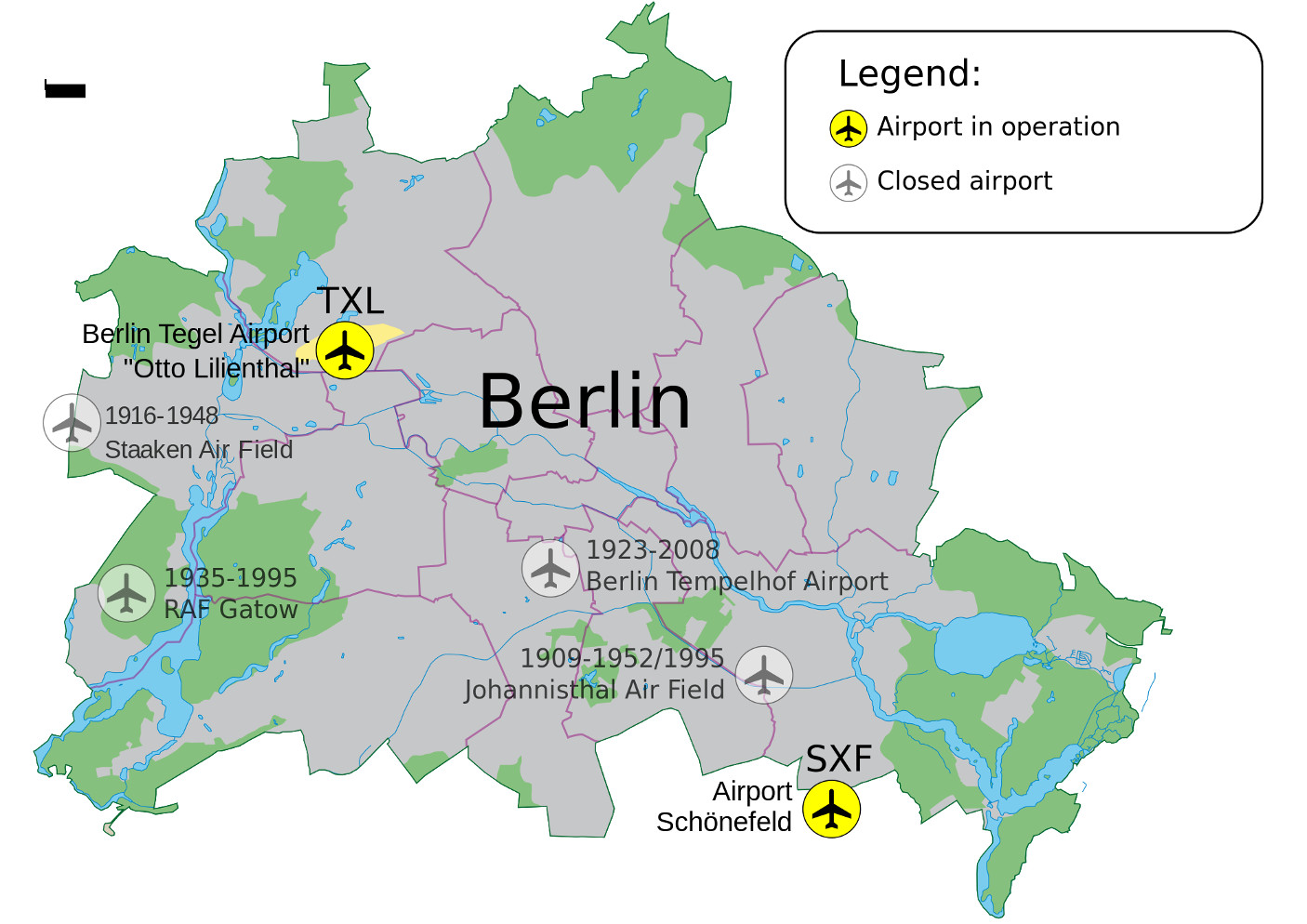
- -- Berlin Brandenburg Airport -- Berlin Brandenburg Airport (IATA: BER, ICAO: EDDB) (German: Flughafen Berlin Brandenburg Willy Brandt) is an international airport located adjacent to the current Berlin Schönefeld Airport in Schönefeld 18 kilometres (11 mi) south of the city center of Berlin. It was originally intended to replace both Schönefeld and Berlin Tegel Airport, and to become the single commercial airport serving Berlin and the surrounding state of Brandenburg, an area with a combined 6 million inhabitants. However it is now known it will only replace Schönefeld, as the old Schönefeld airport is in current expansion because it will still be required to cope with rising passenger numbers.
- -- Berlin Tegel Airport -- Berlin Tegel Airport (German: Flughafen Tegel "Otto Lilienthal") (IATA: TXL, ICAO: EDDT) is the main international airport of Berlin, the federal capital of Germany. It has served formerly West Berlin and ranks ahead of the smaller Berlin Schönefeld Airport. The airport is christened after Otto Lilienthal and the fourth busiest airport in Germany with just over 20.7 million passengers in 2014.[1] The airport is a hub for Air Berlin and serves as a base for Germanwings. It features flights to several European metropolitan and leisure destinations as well as some intercontinental routes. It is situated in Tegel, a section of the northern borough of Reinickendorf, 8 km (5.0 mi) northwest of the city center of Berlin. Tegel Airport is notable for its hexagonal main terminal building around an open square, which makes walking distances as short as 30 m (98 ft) from the aircraft to the terminal exit.
Automobiles
Die Gesetze der Nacht: The Traditions
The First Tradition: The Masquerade
Thou shall not reveal thy nature to those not of the Blood. Doing so shall renounce thy claims of Blood.
The Second Tradition: The Domain
Thy domain is thine own concern. All others owe thee respect while in it. None may challenge thy word while in thy domain.
The Third Tradition: The Progeny
Thou shall sire another only with the permission of thine elder. If thou createst another without thine elder's leave, both thee and thy progeny shall be slain.
The Fourth Tradition: The Accounting
Those thou create are thine own childer. Until thy progeny shall be released, thou shall command them in all things. Their sins are thine to endure.
The Fifth Tradition: Hospitality
Honor one another's domain. When thou comest to a foreign city, thou shall present thyself to the one who ruleth there. Without the word of acceptance, thou art nothing.
The Sixth Tradition: Destruction
Thou art forbidden to destroy another of thy kind. The right of destruction belongeth only to thine elder. Only the eldest among thee shall call the blood hunt.
Die Untoten: The Vampires of Berlin
"The kine have their eyes on all Europe; but perhaps nowhere as strongly as they do Germany. The Camarilla cannot permit this endless squabbling between the Eastern and Western factions to continue. The fools endanger both the Masquerade and the peace the Camarilla embodies. If East and West cannot live in peace, if they cannot settle their disputes promptly and quietly, then we must settle their affairs for them. One almost expects such foolishness in the new world, but we cannot allow anarchy to reign in any part of our own continent. If necessary, we must choose their ruler for them and destroy any who would oppose us." -- Karl Schrekt, Former Justicar of Clan Tremere (circa. 1987)
Die Unerwünschten: The Caitiff
"A Berlin mindset is of greater value than a nice area." -- G.W.F.Hegel
Only a few of the Kindred who have come to Berlin have been foolish enough to admit to being Caitiff. These unfortunates have seldom lived long enough to regret their stupidity. There are no Caitiff in Berlin at this time -- or at least, none who will admit to being of thin blood. The Kindred of Berlin hold that allowing the weaker Caitiff to live is one of the main causes of the chaos in North America and the rest of the New World. Some believe the Malkavians harbor several mongrels in their midst, but no one has been able to prove it.
Das östliche Gericht: The Eastern Court
Brujah
 Dietmar Vogel -- Verrückter Wissenschaftler
Dietmar Vogel -- Verrückter Wissenschaftler
Malkavian
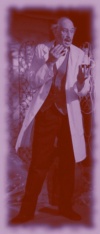 -- Henry Jekyll -- The Doctor.
-- Henry Jekyll -- The Doctor.
Toreador
 -- Thomas De Lutrius -- Der gequälte Künstler
-- Thomas De Lutrius -- Der gequälte Künstler
(The Painter in Pain)
Tremere
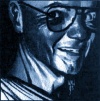 -- Frederick Werther -- Der kleine Regent
-- Frederick Werther -- Der kleine Regent
(The Little Regent)
Ventrue
 -- Gustav Breidenstein -- Prince of the East -- Die eiserne Faust -- Gustav Breidenstein -- Prince of the East -- Die eiserne Faust (The Iron Fist) Gustav Breidenstein was the authoritarian Prince of all Berlin until his Domain was divided in two, and his leadership over west Berlin usurped by his eldest childe - Wilhelm Waldberg. Gustav remains in control of the eastern part of the city, and is obsessed with taking the western part back. |
 -- Katarina Kornfeld -- The Loyal Childe -- Katarina Kornfeld -- The Loyal Childe
|
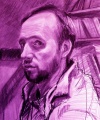 -- Parsifal Wildgrube -- Court Page -- Parsifal Wildgrube -- Court Page
|
Das Western-Gericht: The Western Court
Brujah
- Confusion in her eyes, says it all.
- She's lost control.
-- Joy Division, "She's Lost Control"
Very few Brujah remain in Berlin, for most have gone to investigate the disappearance of clan members in what used to be the Soviet Union. Most who left have not been heard from since. The few who remain, however, do not hesitate in making their presence known.
All but one of the remaining members of this clan have their primary havens on the west side of the city, where they have stayed to gather information for the clan elders. They have opted to wait until receiving further word from one of their superiors on what to do next, but their masters to the east no longer respond to ongoing requests for direction. To date, they have had no luck in discovering what has happened, either to those Soviet Brujah who originally vanished in 1991 or to those who went to investigate those disappearances.
For the most part, the remaining Brujah run with the city's younger anarchs, finding them easy to associate with. The Brujah of Berlin still support Gustav, a fact which often confuses anarchs from other cities. The clan uses its association with the anarchs to fuel discontent in West Berlin; it does nothing to stop rumors of its involvement with the growing chaos, but will deny everything if confronted by anyone in authority.
 Dieter Kotlar -- Der Krieger Dieter Kotlar -- Der Krieger (The Warrior) |
 Erika Geiger -- Die Fanatic Erika Geiger -- Die Fanatic (The Fanatic) |
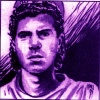 Stefan Rutigar -- Die Faust Stefan Rutigar -- Die Faust (The Fist) |
Gangrel
"Berliners appreciate nature, because so many pubs are located there." -- Mark Chagall
Berlin has fewer permanent Gangrel than it does Brujah. Most decided to leave the area when West Berlin suffered it first heavy influx of Kindred some time ago. The clan members still in town, however, are powerful enough to hold their own and smart enough to remain mostly neutral in the war between the east and west. While most have their havens on the western side of the city, all are allowed to visit the eastern half, at will -- provided they present themselves to Gustav when they cross over.
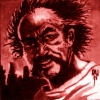 -- Daryl Lutz -- Das wilde Tier
-- Daryl Lutz -- Das wilde Tier
(The Feral One)
Malkavian
- "When der Fuehrer says we is der master race"
- "We heil pppt, heil pppt, right in der Fuehrer's face!"
- -- Spike Jones and the City Slickers, "Der Fuehrer's Face"
The Malkavian clan makes up the second largest coterie in the city, after the Ventrue. The member of the clan, often referred to as Fledermäuse (bats), are all active in the political battle raging between east and west.
Once a week, the entire clan gathers to draw straws. The Malkavian who draws the shortest straw decides which side of the battle they will join for the week. Theoretically, any Malkavian in town can attend and draw a straw, but most refuse to appear at these "political rallies." Most don't know what happens at these meetings, and the remainder fear being branded as traitors should the outcome go against their side.
From time to time, the Malkavians also join the Final Reich in its protests throughout town, feeling that no one should be left out of the fun that can be had. As a general rule, the clan treats everyone equally -- as if they were slightly stupid and therefore deserving of Malkavian pity.
The Kindred of Berlin have learned the hard way, not to take the insane members of this clan lightly, for the Malkavians have called their own Blood Hunts on people who offend them. Both Gustav and Wilhelm look upon the Malkavian clan as a blight that must be tolerated in Berlin. If Gustav should win the political battle, however, he will do his best to immediately remove the blight.
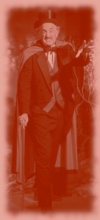 -- Edward Hyde -- Criminal Mastermind. -- Edward Hyde -- Criminal Mastermind.
|
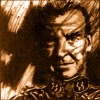 Hermann Goring -- Flüstern in der Nacht Hermann Goring -- Flüstern in der Nacht (Whispers in the Night) |
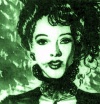 Persia -- Die schöne Statue Persia -- Die schöne Statue (The Beautiful Statue) |
Toreador
 -- Anntoinette Rotwang -- Die Frau, die Uhren -- Anntoinette Rotwang -- Die Frau, die Uhren (She who Watches) |
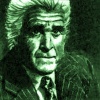 -- Hans Vroenik -- Maestro -- Hans Vroenik -- Maestro
|
Tremere
 -- Maxwell Ldescu -- Regent of the West -- Der Magus -- Maxwell Ldescu -- Regent of the West -- Der Magus (The Magus) | |
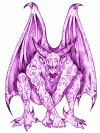 -- Gotthold -- Gargoyle bodyguard to Ldescu -- Gotthold -- Gargoyle bodyguard to Ldescu
|
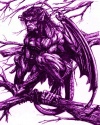 -- Falk -- Gargoyle bodyguard to Ldescu -- Falk -- Gargoyle bodyguard to Ldescu
|
 -- Wolfram -- Chantry Guardian & Elder Gargoyle of Berlin
-- Wolfram -- Chantry Guardian & Elder Gargoyle of Berlin
 -- Marzell Trumbauer -- Resident Astor -- Marzell Trumbauer -- Resident Astor
| |
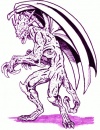 -- Thorben -- Gargoyle bodyguard to Trumbauer -- Thorben -- Gargoyle bodyguard to Trumbauer
|
 -- Ruprecht -- Gargoyle bodyguard to Trumbauer -- Ruprecht -- Gargoyle bodyguard to Trumbauer
|
Ventrue
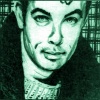 -- Wilhelm Waldburg -- Prince of the West -- Wilhelm Waldburg -- Prince of the West Wilhelm Waldburg is the first progeny of Gustav Breidenstein, who struggles with his sire over the Princedom of Berlin - holding domain over the western part of the city since the end of the Second World War. |
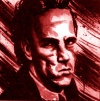 -- Peter Kleist -- The Protector -- Peter Kleist -- The Protector
|
 -- Nichole Sotherby -- Passions Kiss -- Nichole Sotherby -- Passions Kiss
|
 -- Irmingard Kopp -- Ambassador from the West -- Irmingard Kopp -- Ambassador from the West
|
Nosferatu: Mercenary Agents of Neutrality
 Melitta Wallenberg -- Die verführerische Kanalratte Melitta Wallenberg -- Die verführerische Kanalratte
|
 Ellison Humboldt -- Die Wahrheit in den Mauern Ellison Humboldt -- Die Wahrheit in den Mauern
|
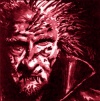 Ugly Rasputin -- Die unaufhaltsamen Wut Ugly Rasputin -- Die unaufhaltsamen Wut
| |
 Amelia -- Die weinende Frau Amelia -- Die weinende Frau
|
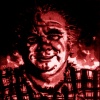 Wolfgang -- Die wahnsinnigen Lachen Wolfgang -- Die wahnsinnigen Lachen
|
Diejenigen, die noch zu wählen, eine Seite
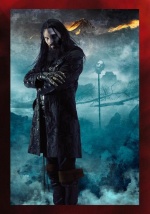 Dracula -- The Fabled "Son of the Dragon" Dracula -- The Fabled "Son of the Dragon"
|
 Wilhelmina Harker, nee Murray -- British Progeny of the Dragon Wilhelmina Harker, nee Murray -- British Progeny of the Dragon
|
 Cassandra Fonseca -- True Brujah Cop Cassandra Fonseca -- True Brujah Cop
|
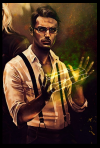 Jason Maier -- Assamite Vizier Engineer & Business Mogul Jason Maier -- Assamite Vizier Engineer & Business Mogul
|
 Brenda Maier -- Naga Raja Necronomist Brenda Maier -- Naga Raja Necronomist
|
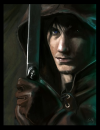 Hugo Satrix -- Ravnos Pickpocket Hugo Satrix -- Ravnos Pickpocket
|
 Chou Shizuka -- The Eastern Succubus Chou Shizuka -- The Eastern Succubus
|
 Vespa -- The Velvet Serpent {Tremere Hostage} Vespa -- The Velvet Serpent {Tremere Hostage}
|
- -- Manuela Estefanía Capello -- Brujah anarch from Los Angeles (breach of the Masquerade at the airport) 3pt boon owed to Germano
- -- Chill-Killa -- Toreador anarch Rapper from Los Angeles (breach of the Masquerade at the airport)
- -- Somboon Metharom -- Thai Nosferatu anarch from Los Angeles (breach of the Masquerade at the airport) 3pt boon owed to Germano
- -- Brian O'Reilly -- Viking, Ventrue, and Baron of Yorkshire
- -- Chelsea Fischer - Malkavian
- -- Erin Noah - Gangrel
- -- Mac Verser - Toreador
- -- Thetmes -- Thetmes, is the Caliph of Alamut since 1529, who oversees the training of the fida'i.
Diejenigen Ausländischen Blut: Foreign Kindred
Banu Haqim
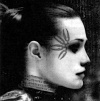 -- Fatima Al-Faqadi -- -- Fatima Al-Faqadi -- (The Hand of Vengeance) |
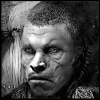 -- 'Djuhah -- -- 'Djuhah -- (Seraph of the Black Hand) |
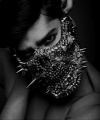 -- Amaravati -- Loyalist Sorcerer -- Amaravati -- Loyalist Sorcerer (Amr of Alamut) |
 -- Tariq -- Anathema -- Tariq -- Anathema (The Silent) |
Die Anhänger Set
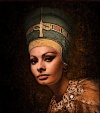 -- Nefertiti -- Progeny of Set. Sire of Aabt Kindred. -- Nefertiti -- Progeny of Set. Sire of Aabt Kindred. (Self-Proclamed Queen of Europe} |
[[]] -- Zelpha -- Final Daughter of Lamia |
 -- 'Ezra Winthrop -- Akar the Viper -- 'Ezra Winthrop -- Akar the Viper (alias: Darrell Scrivener) |
 -- Isabel Scott -- Former officer of the FAS security forces and a Setite ghoul. -- Isabel Scott -- Former officer of the FAS security forces and a Setite ghoul. (Alias: Gwendoline Kendal) |
Der Giovanni
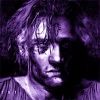 -- Ambrogino Giovanni -- Necromantic prodigy and Cappadocian Clan Atavism -- Ambrogino Giovanni -- Necromantic prodigy and Cappadocian Clan Atavism () |
 Germano Giovanni -- Godfather of Quebec Germano Giovanni -- Godfather of Quebec
|
Die Ravnos: The Caravan
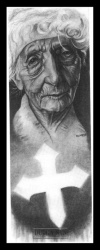 Durga Syn -- Durga Syn -- (Ravnos wise-woman and staunch enemy of Baba Yaga) |
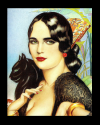 Mina -- Mina -- (Bulgarian Gypsy Vadoma) |
 -- Natalia Danchev -- -- Natalia Danchev -- (Zigeunerführer) |
 Callirus -- Callirus -- (The Jackdaw King) |
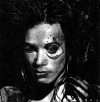 Ghivran Dalaal -- Ghivran Dalaal -- (The Dead God) |
Fraktionen in der Jyhad: The Sects
 Die Einherjar: Diener von Odin
Die Einherjar: Diener von Odin
- -- Brunhilde -- Valkyrie
- -- Brian O'Reilly -- Viking, Ventrue, and Baron of Yorkshire
- -- Hans Holgersson -- Fledgling Childe of Brian O'Reilly and unofficial scourge of Yorkshire.
Deutsch Anarchisten: The Anarchs of Berlin
 Das Letzte Reich: The Final Reich
Das Letzte Reich: The Final Reich
The Final Reich is the only known and tolerated anarch group in the two Berlins.
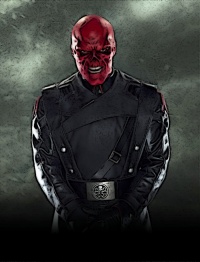 Red Skull -- Der Furor Red Skull -- Der Furor(The Leader) |
 Dieter Kotlar -- Der Krieger Dieter Kotlar -- Der Krieger (The Warrior) |
 Erika Geiger -- Die Fanatic Erika Geiger -- Die Fanatic (The Fanatic) |
 Stefan Rutigar -- Die Faust Stefan Rutigar -- Die Faust (The Fist) |
 -- Edward Hyde -- Criminal Mastermind. -- Edward Hyde -- Criminal Mastermind.
|
 Wolfgang -- Die wahnsinnigen Lachen Wolfgang -- Die wahnsinnigen Lachen
|
 Brenda Maier -- Naga Raja Necronomist Brenda Maier -- Naga Raja Necronomist
| |
 Dietmar Vogel -- Verrückter Wissenschaftler Dietmar Vogel -- Verrückter Wissenschaftler
|
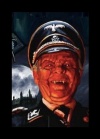 Kayetan Schulte -- Capitão da Schutzstaffel Kayetan Schulte -- Capitão da Schutzstaffel() |
 Byron Burnham -- ' Byron Burnham -- '(Grand Dragon of the Neo-Nazi White Dragons Gang of Seattle. ) |
 Helma Xylander -- ' Helma Xylander -- '(Personal assistant to the Grand-Dragon and Draconian Huntswoman from Seattle.) |
Die Jagdgesellschaft: The Hunting Party
 Wolfgang -- Die wahnsinnigen Lachen Wolfgang -- Die wahnsinnigen Lachen
|
[[]] [[]] -- ' () |
| [[]] [[]] -- ' () |
[[]] [[]] -- ' () |
| [[]] [[]] -- ' () |
[[]] [[]] -- ' () |
Die Zwangsjacke Tanzclub (The Straitjacket Dancing Club)
 Arndt Straub -- ' Arndt Straub -- '() |
 Conrad Kaiser -- ' Conrad Kaiser -- '() |
 Wieland Giehl -- ' Wieland Giehl -- '() |
 Frieda Metz -- ' Frieda Metz -- '() |
 Hedy Käufer -- ' Hedy Käufer -- '() |
 Philippa Grosz -- ' Philippa Grosz -- '() |
Die Bolschewiki: Communism - The Trident of Carthage
 Franz Jacob -- German Communist and Resistance Fighter during W.W.II Franz Jacob -- German Communist and Resistance Fighter during W.W.II(Brujah) |
[[]] Nestor Petrov -- Bolshevik and Survivor of the slaughter of Moscow (Brujah) |
[[]] Takuya Shiraiwa -- Ardent Japanese Communist and Physician (Brujah) |
Die Camarilla: The Ivory Tower
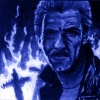 Karl Schrekt -- Tremere Justicar Karl Schrekt -- Tremere Justicar
|
| Jessica Morrow -- Schrekt's Ventrue Archon |
| Julian Sanderson -- Schrekt's Tremere Archon |
| Ian Carfax -- Schrekt's Tremere Archon |
| Charity Caize -- Schrekt's Malkavian Archon |
| Samat Ramal -- Schrekt's Setite Archon |
| Richard O'Shea -- Schrekt's Brujah Archon |
| Tomlynn Sinclair -- Schrekt's Nosferatu |
| Angelino Hammer -- Schrekt's Brujah Archon |
| Gates -- Schrekt's Gangrel Archon |
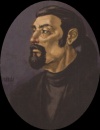 Aristotle de Laurent -- Kindred chronicler, Noddist expert and a leading member of the secretive cult of the Mnemosyne. Adopted sire of the famous Gangrel adventurer and archeologist Beckett. {Paris} Aristotle de Laurent -- Kindred chronicler, Noddist expert and a leading member of the secretive cult of the Mnemosyne. Adopted sire of the famous Gangrel adventurer and archeologist Beckett. {Paris}
|
Der Sabbat: The Sword of Caine
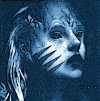 Sascha Vykos -- Prici and Angel of Caine Sascha Vykos -- Prici and Angel of Caine
|
25:17 -- Black Hand Bodyguards to Prici Vykos
25:17 is a Black Hand coven that is led by Ezekiel. 25:17 was originally nomadic and was very active in New York City and Chicago, but the pack settled in Montreal following the trial of Sangris the Serpent. All of its members have always been Black Hand members in good standing.
 Ezekiel -- Serpent of the Light - Ductus Ezekiel -- Serpent of the Light - Ductus
|
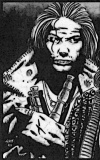 Soldat -- City Gangrel antitribu Soldat -- City Gangrel antitribu
|
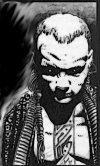 Reza Fatir -- Assamite Antitribu Reza Fatir -- Assamite Antitribu
|
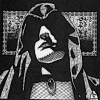 Yasmin the Black -- Tremere antitribu Yasmin the Black -- Tremere antitribu
|
The Coven of Librarians
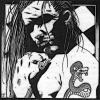 Santiago DeSoto in the form of Sangris the Serpent -- ' Santiago DeSoto in the form of Sangris the Serpent -- '
|
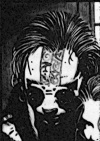 Christanius Lionel -- ' Christanius Lionel -- '
|
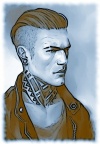 Roland Tolbert -- ' Roland Tolbert -- '
|
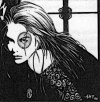 Molly 8 -- ' Molly 8 -- '
|
| [[]] Camilla -- ' |  Gérald -- ' Gérald -- '
|
Die wilden Karten
 Beauregard Krueller -- Heckler Beauregard Krueller -- Heckler
|
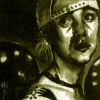 Frank Litzpar -- ' Frank Litzpar -- '
|
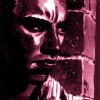 Tonio Borrelli -- ' Tonio Borrelli -- '
|
 Bloodfeud -- ' Bloodfeud -- '
|
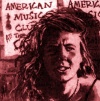 Illyana Dmitju -- ' Illyana Dmitju -- '
|
 Charice Fontaigne -- ' Charice Fontaigne -- '
|
Die Liga der Nacht
 Xavier de Calais -- Former Gangrel Justicar before he led the clan into independence.
Xavier de Calais -- Former Gangrel Justicar before he led the clan into independence.
Die Inconnu: Ancients on the Playground
Zufällige Faktoren
- -- Beckett
- -- Anatole
- -- Lucita of Aragon
Diejenigen, die schlummern: Those Yet to Awaken
- -- Johann Grosser -- Elder Toreador
- -- Isabella Correlli -- Elder Brujah
- -- Melitta Wallenberg -- Nosferatu Elder
- -- Erik Eigermann -- Ventrue Elder
Die Erwachten: The Awakened of Germany
Werewolves
Traditionally, the Garou of Berlin have been part of the Get of Fenris. The Tribe has recently decimated itself after a brutal purge against those who sympathized with the Third Reich, especially the Swords of Heimdall Camp. A group of Fenrir under the thrall of a former Kinfolk-turned-Leech, Daryl Lutz, occupy the Grunewald district of the city. Within the Umbra, the Berlin Wall still stands, invested with Wyrmish energies fueled by the dislike and symbolic weight of the structure.
- -- Swords of Heimdall -- A camp of among the Get of Fenris who sympathized with the Third Reich.
Mages
Berlin was once the stronghold of a Verbena faction of rune mages called the Iron Circle, who later began to support the Third Reich, using its influence to persecute rival mages while encouraging occult groups like the Asatru Futhark. In the waning days of the Second World War, a coven of Nephandic archmages gathered before Berlin in an event referred to as the Sundering of Berlin, using one of the greatest displays of Qlippothic magic in history for a ritual to summon their masters into this world. A joint group of Traditionalists and Technocrats managed to defeat them, as the magic of the Nephandi failed in the last moment, allowing both groups to banish the Archmages into the hellish realms of the entities they revered. The Iron Circle was hunted to near-extinction by other Verbena and survives only in small covens.
- -- Asatru Futhark --
- -- Iron Circle -- A cabal of Rune Mages
Wraiths
Berlin is city under Stygian control. Its Anacreon is no other than Otto von Bismarck, fettered by his fear for the fate of the nation he helped to create. Part of the Iron Legion, his regime is greatly appreciated by the local Wraiths. Under his leadership, the Necropolis of Berlin has become one of the most well-fortificated on the whole continent. Every Wraith that accepts his authority is granted regular access to Pardoners, protection of their Fetters, as well as consolation and counsel after being overtaken by their Shadow. In exchange, every wraith citizen is subject to compulsory military service, divided in corpses dedicated to one of the Legions. Each Legion, apart from the Legion of Fate, oversees one-seventh of city’s forces. Each military corps can elect on representative to act as a counselor to decision-making in the higher ranks. Civil issues are represented by neighborhood unions, who oversee civic disputes and bring issues before the military branches.
During the Night of Short Chains, the Grim Legion was unable to even marginally affect Bismarck’s rule. Any form of Guild representation is quickly destroyed and every Wraith that is caught in a public act of violence while not under control of their Shadow is sentenced to soulforging. Furthermore, the Necropolis is well defended by several animated Relics called the “Iron Champions”, formed from statues of General von Hindenburg that were erected during World War I and often destroyed in the riots following the defeat.
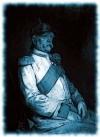 -- Otto von Bismarck -- Anacreon of Berlin
-- Otto von Bismarck -- Anacreon of Berlin
Changelings
The Kithain maintain a Freehold near the Botanical Gardens. The Trod they guard has a calming power, making people more relaxed and reducing the risk of falling into a supernatural rage. The Changelings usually stick to their domain and expect the same from other supernaturals, so most avoid the area.
- -- Sonje Brahms -- Troll Princess of House Beaumayn
Kuei-jin
Groups of Kuei-jin Running Monkeys occasionally travel to Berlin, attracted by the tales of a wu that has managed the feat. What these young Kuei-jin do not know is that they are being manipulated by Prince Waldburg, who hopes to learn more about the Cathayans by capturing and studying them, then alters their memory via Dominate and sends them back home to spread the news of their “adventures”.
- -- Takuma Saito -- Watchtower of the East
Hunters
During the Third Reich, the Gestapo captured several supernatural creatures, among them Kindred, Garou and Changelings, for Project: Werewolf. These creatures were experimented on in a secret facility within the city and after the war, multiple of the surviving test subjects that could be found were put down and the facility was buried under rubble that forms the Teufelsberg within the city. Still, some of captured creatures are rumored to remain, as well as documents about the tests.
 -- Kiki Vieth -- Papal Assassin
-- Kiki Vieth -- Papal Assassin
Demons
Several Fallen have taken up residence in Berlin, forming a Court of their own. The most famous, perhaps, is the Fiend Ahrimal, who inhabits the body of detective Gerhard Liebner of the Kriminalpolizei, and works to track down malignant demonic activities.
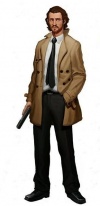 -- Gerhard Liebner -- Chief Detective of the Berlin Kriminalpolizei.
-- Gerhard Liebner -- Chief Detective of the Berlin Kriminalpolizei.
Mummies
Since the late 18th century, their have been rumors of strange supernatural beings of Egyptian origin within Berlin, never more than a whisper would be heard before the rumor vanished, only to crop up again decades later.
 -- Inauhaten -- Mummy Architect and ally of the Manus Nigrum.
-- Inauhaten -- Mummy Architect and ally of the Manus Nigrum.
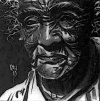 -- Saatet-ta -- The Darkener of the Earth
-- Saatet-ta -- The Darkener of the Earth
Die Chimäre
[[]] -- [[]] --
Schräger als Seltsam
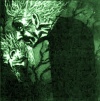 -- The Brothers Grimm -- Creatures of unknown origin who appeared around the time of death of the real Brothers Grimm, and now make trouble for the kindred of Berlin. Most speculation pins them as changelings or mages.
-- The Brothers Grimm -- Creatures of unknown origin who appeared around the time of death of the real Brothers Grimm, and now make trouble for the kindred of Berlin. Most speculation pins them as changelings or mages.
The Ascension of Caine
THE CHRONICLE OF SECRETS
The Signs of Gehenna
Quiet! Hear the raven’s cry!
The stillness of the wind rising hot on the street the towers hide the darkness of the day.
When Lasombra’s dreams-come true on the day when the moon runs as blood.
and the sun rises black in the sky, that is the day of the Damned, when Caine’s children will rise again.
And the world will turn cold and unclean things will boil up from the ground and great storms will roll, lighting
will light fires, animals will fester and their bodies, twisted, will fall.
So, too, our Grand-sires will rise from the ground.
They will break their fast on the first part of us.
They will consume us whole.
On the second day, Caine will return.
And call his Children to the meeting place on the site of the First City he will beckon them, sitting on his basalt throne.
- -- Caine -- The Father of All Vampires
-- and vitae will be as rare as diamonds...
The Ashen Scroll -- A Record of Fallen Immortals
And I heard as it were the noise of thunder
One of the four beasts saying come and see and I saw
And behold a white horse
There's a man going around taking names
And he decides who to free and who to blame
Everybody won't be treated all the same
There'll be a golden ladder reaching down
When the Man comes around
The hairs on your arm will stand up
At the terror in each sip and in each sup
Will you partake of that last offered cup?
Or disappear into the potter's ground
When the Man comes around
Hear the trumpets, hear the pipers
One hundred million angels singing
Multitudes are marching to the big kettledrum
Voices calling, voices crying
Some are born and some are dying
It's Alpha and Omega's kingdom come
And the whirlwind is in the thorn tree
The virgins are all trimming their wicks
The whirlwind is in the thorn tree
It's hard for thee to kick against the pricks
Till Armageddon no shalam, no shalom
Then the father hen will call his chickens home
The wise man will bow down before the throne
And at His feet they'll cast their golden crowns
When the Man comes around
Whoever is unjust let him be unjust still
Whoever is righteous let him be righteous still
Whoever is filthy let him be filthy still
Listen to the words long written down
When the Man comes around
Hear the trumpets, hear the pipers
One hundred million angels singing
Multitudes are marching to the big kettledrum
Voices calling and voices crying
Some are born and some are dying
It's Alpha and Omega's kingdom come
And the whirlwind is in the thorn tree
The virgins are all trimming their wicks
The whirlwind is in the thorn tree
It's hard for thee to kick against the pricks
In measured hundred weight and penny pound
When the Man comes around.
And I heard a voice in the midst of the four beasts
And I looked and behold, a pale horse
And his name that sat on him was Death
And Hell followed with him.
-- Johnny Cash -- The Man Comes Around
- -- Fairuza's Pack -- A Young Pack from Rio de Janeiro and Sasha Vykos' former honor-guard. {Deceased: COD - Killed by the Final Reich and Brian O'Reilly in Berlin 2042}
Character Creation
Story

